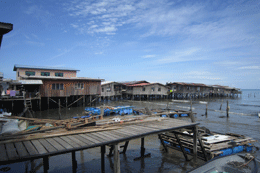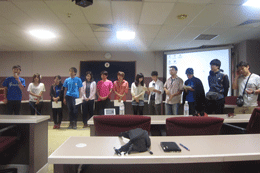DISSOLVA 2022 BORNEO PROJECT
NEWSLETTER No. 13
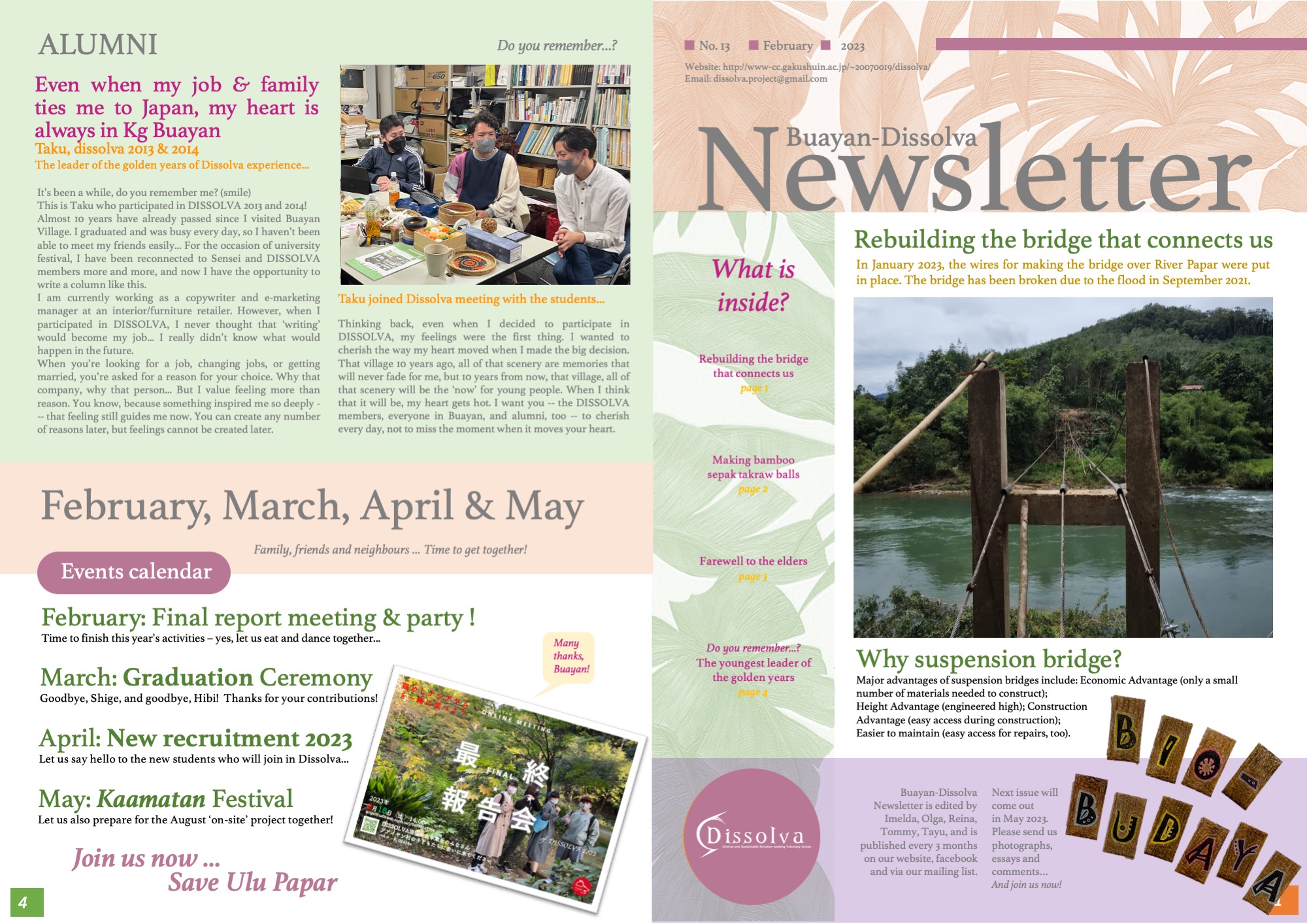
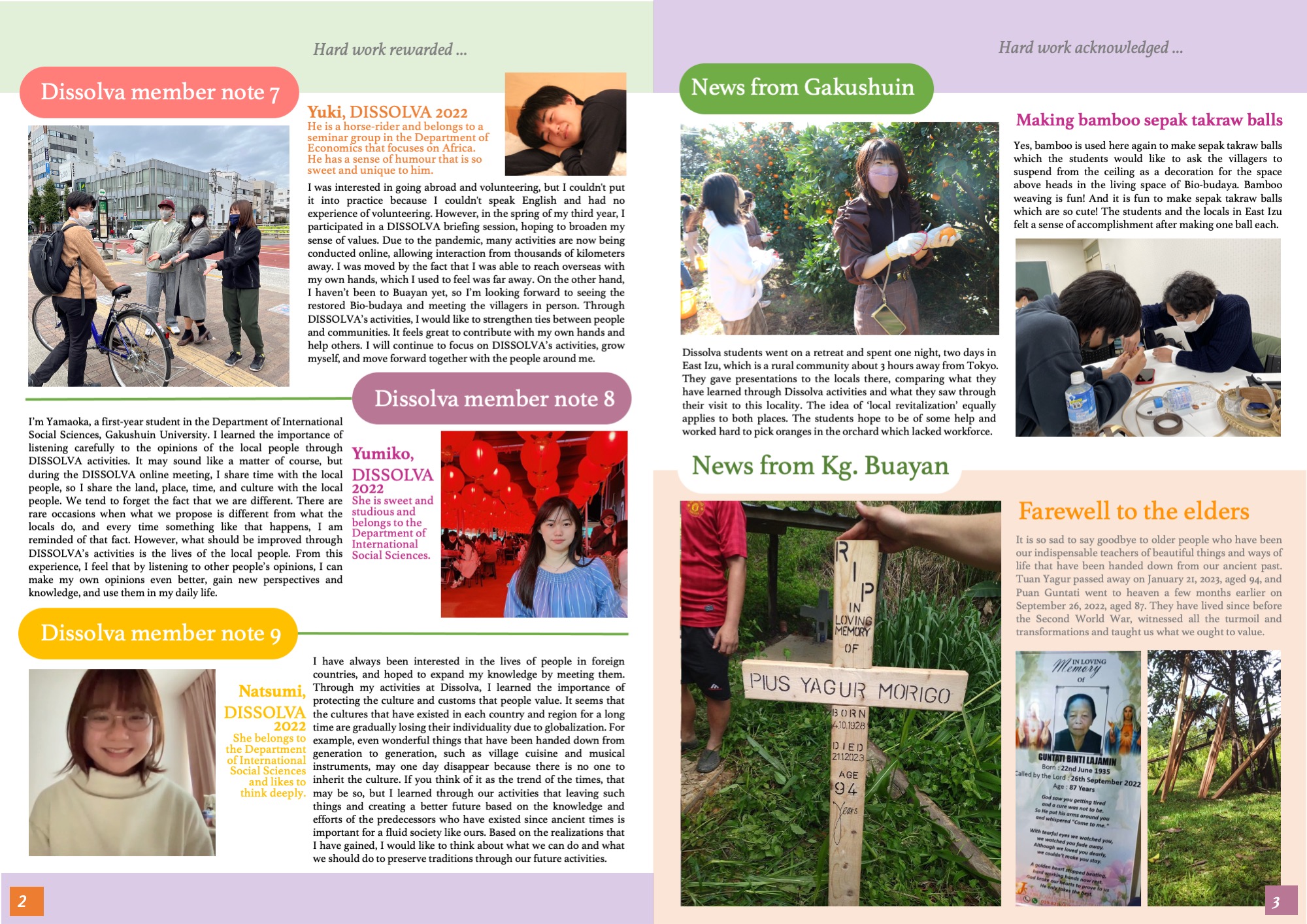
NEWSLETTER No. 12
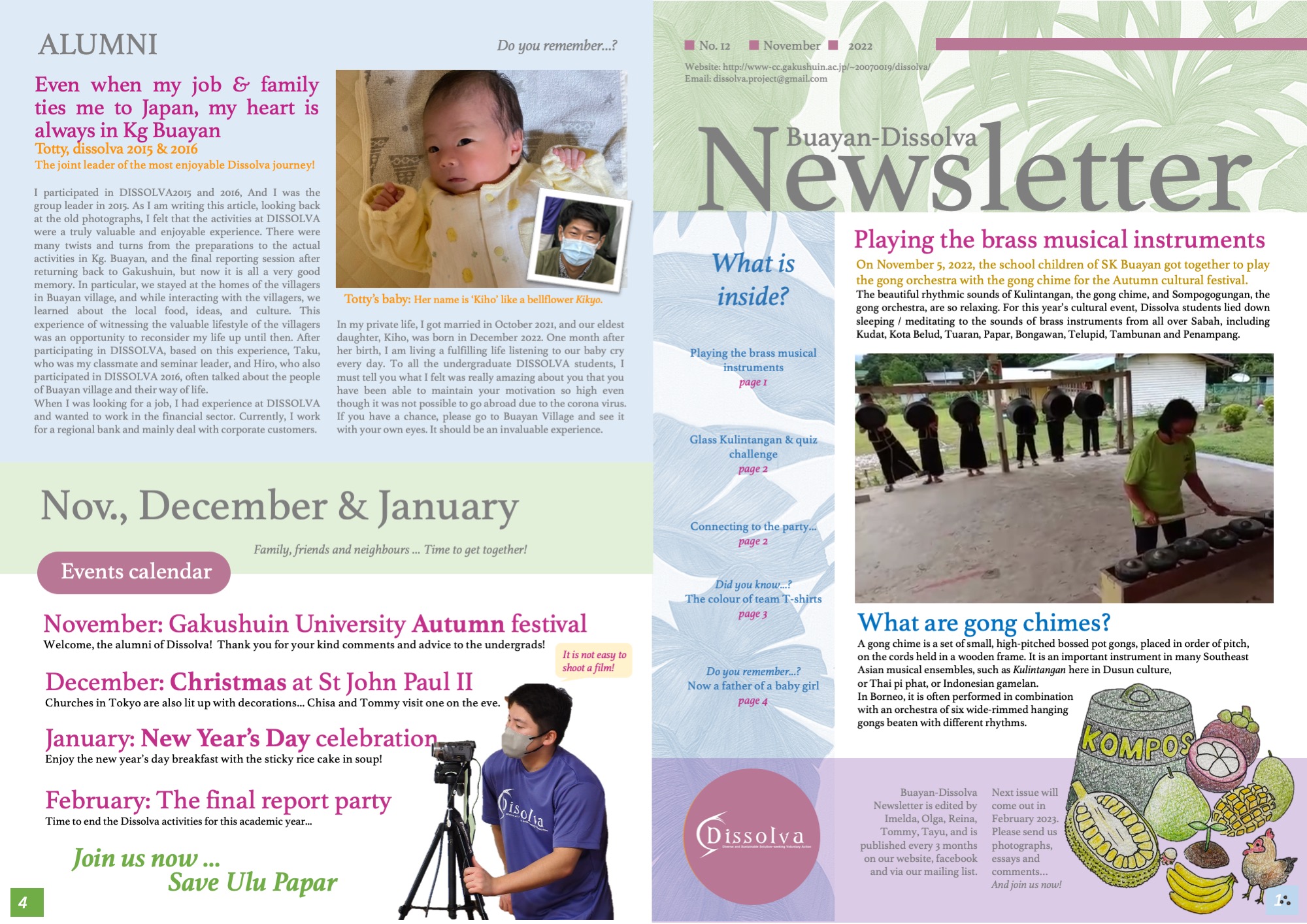
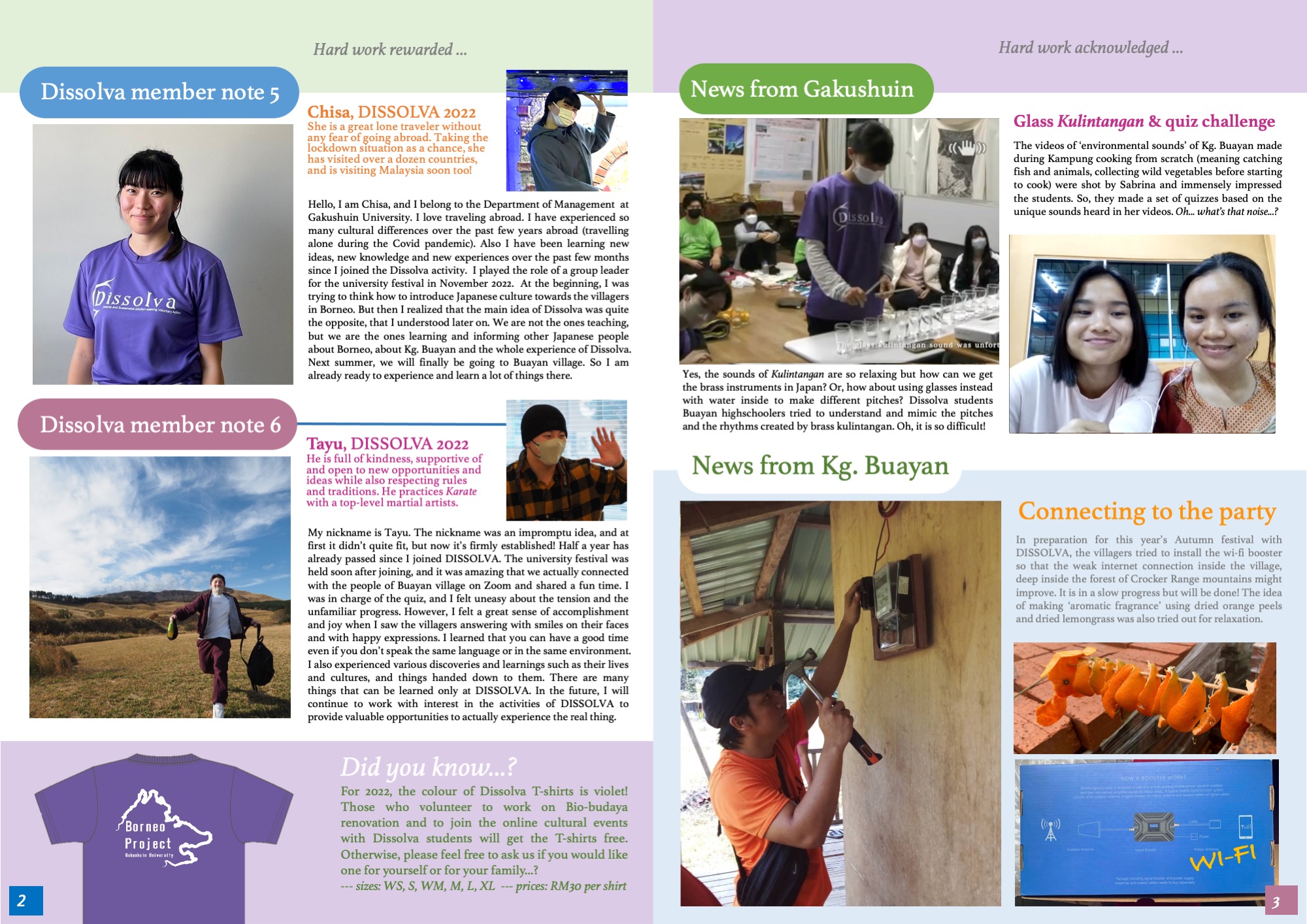
NEWSLETTER No. 11
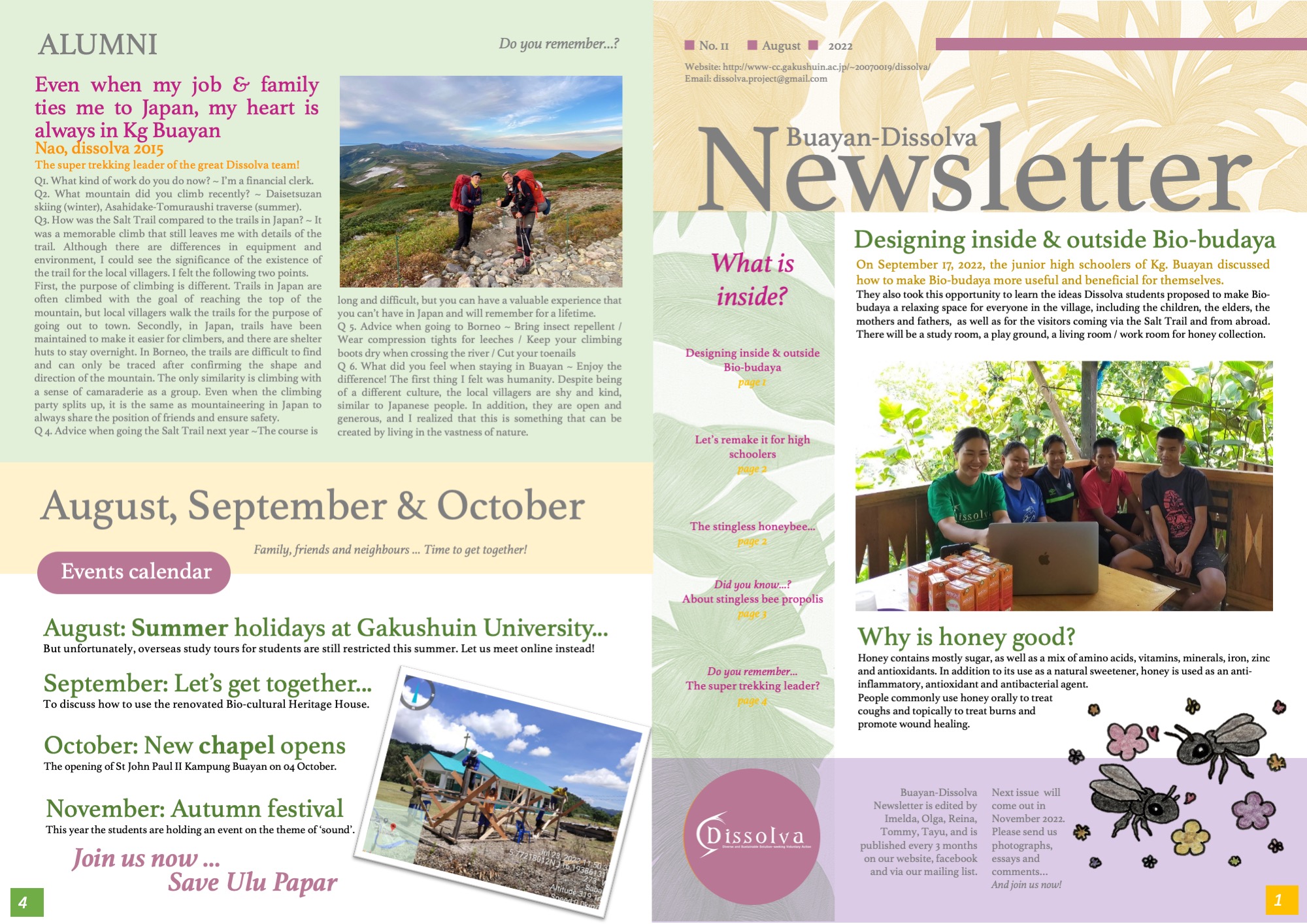
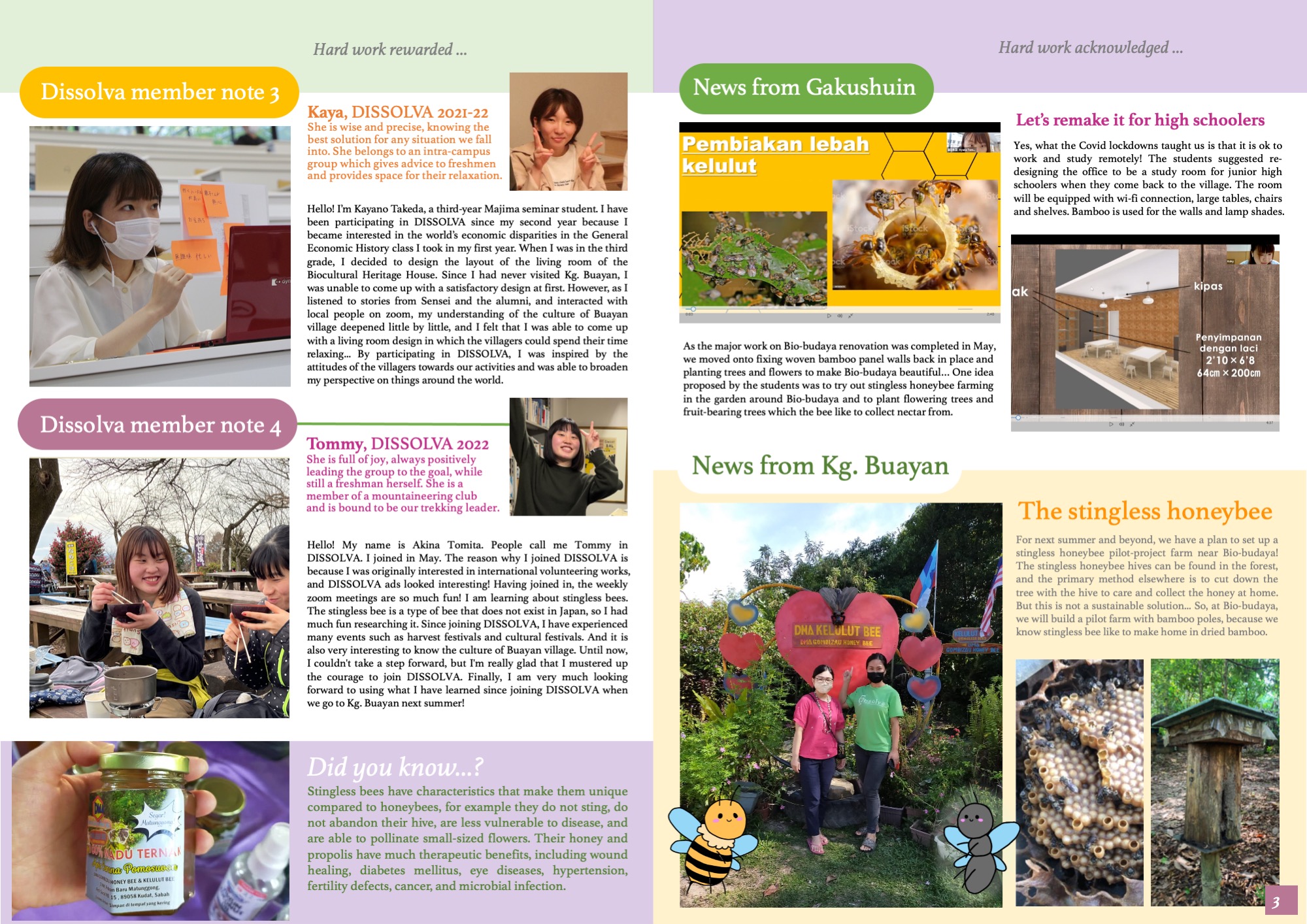
NEWSLETTER No. 10
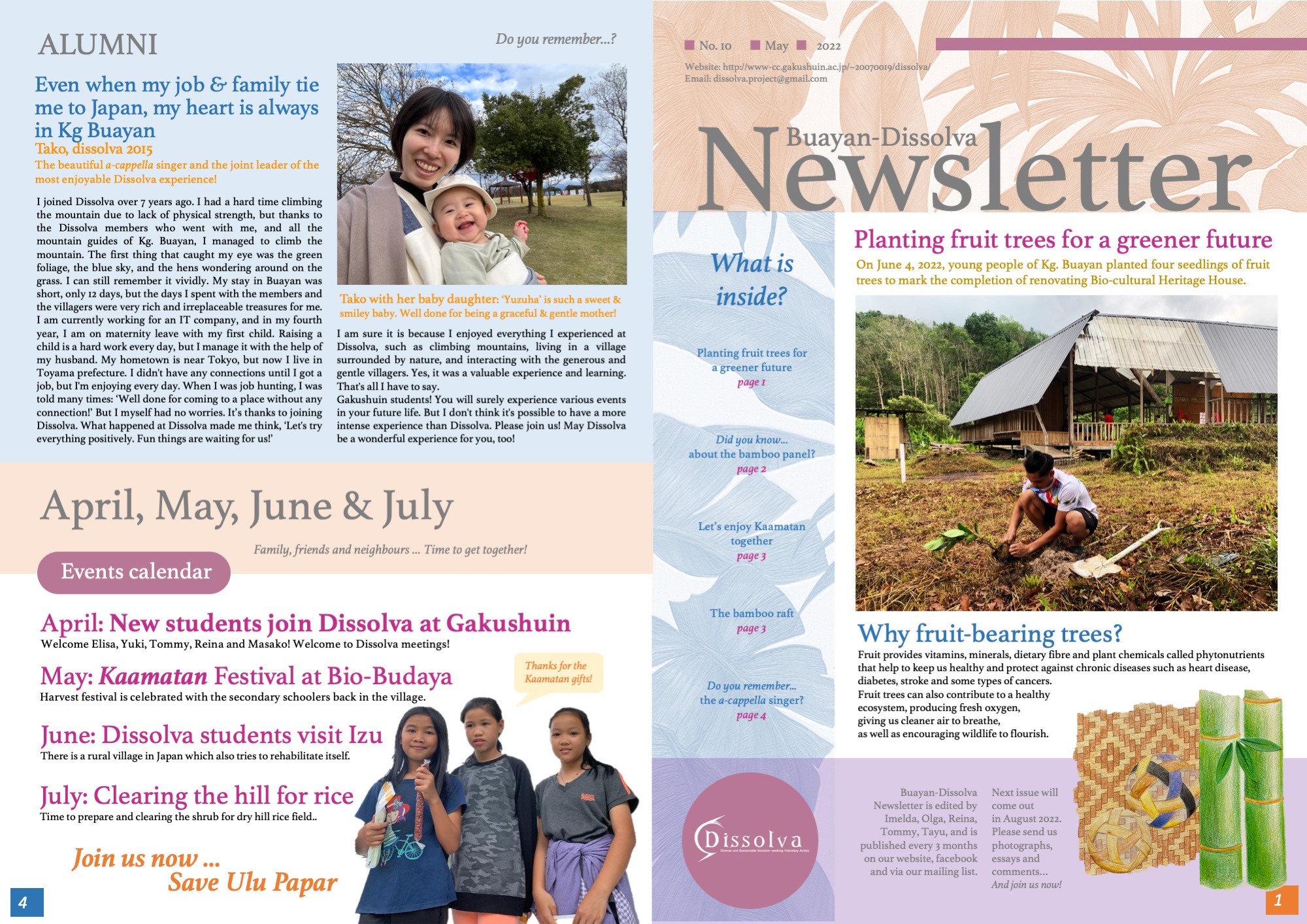
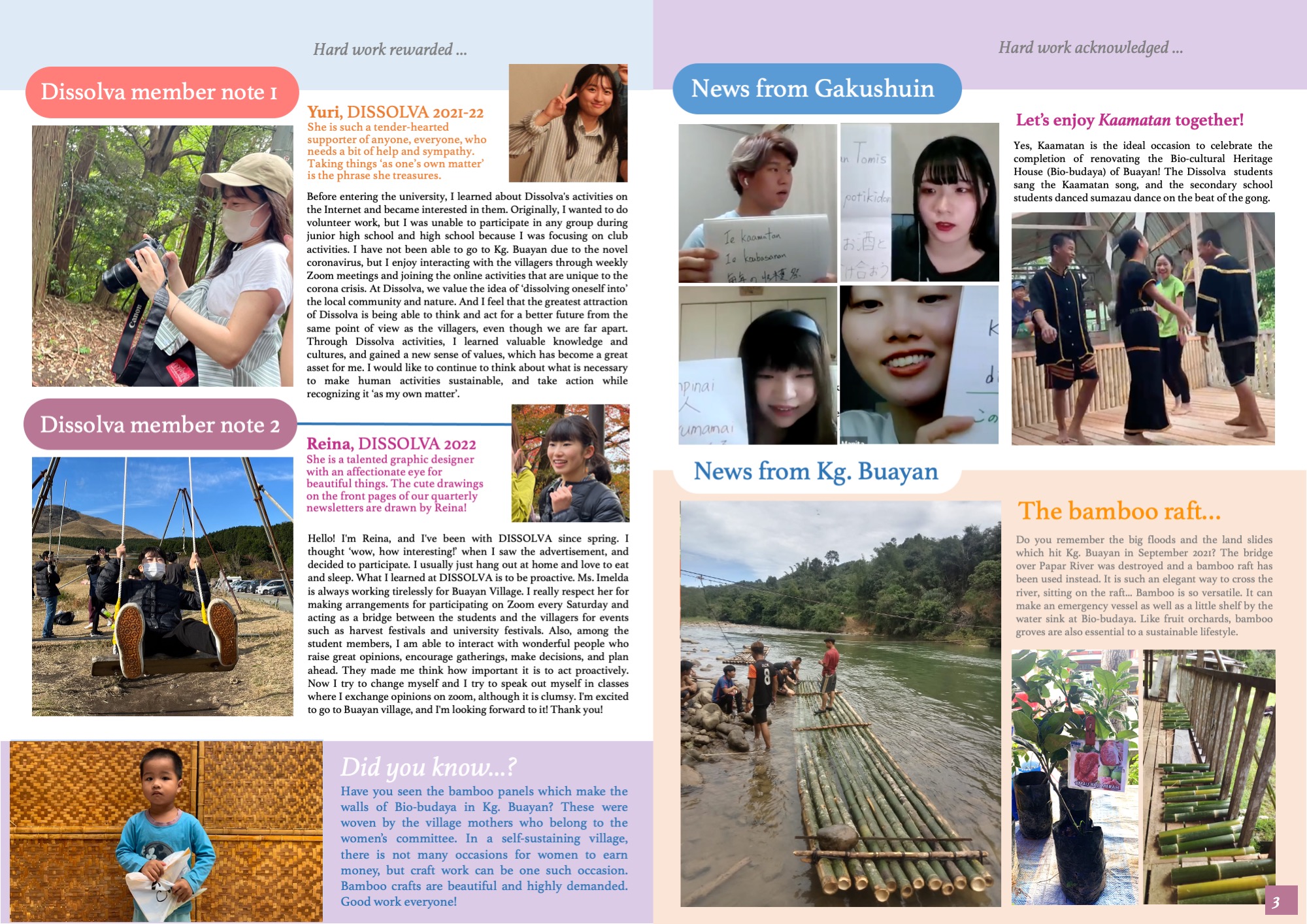
DISSOLVA 2021 BORNEO PROJECT
NEWSLETTER No. 9
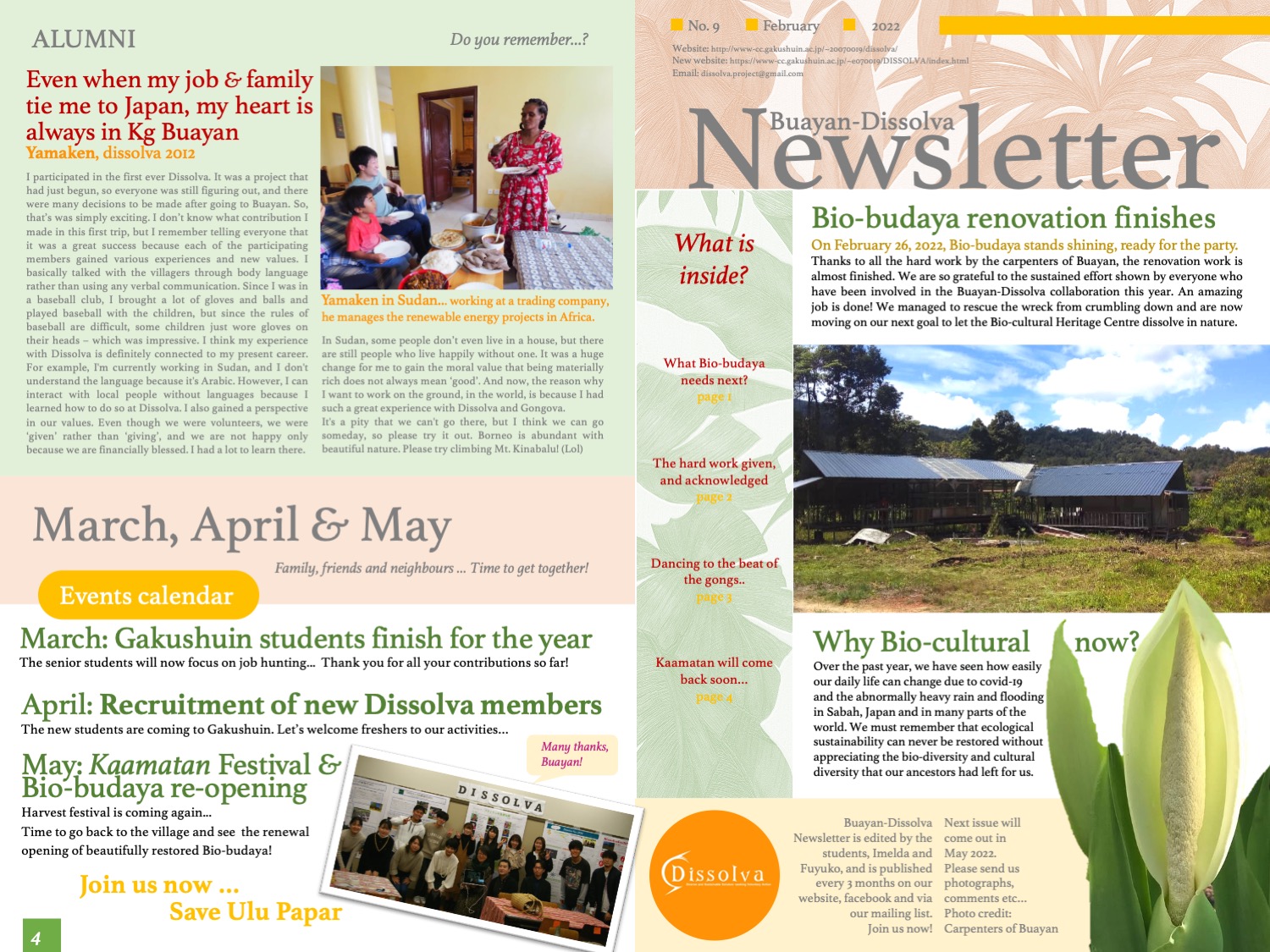
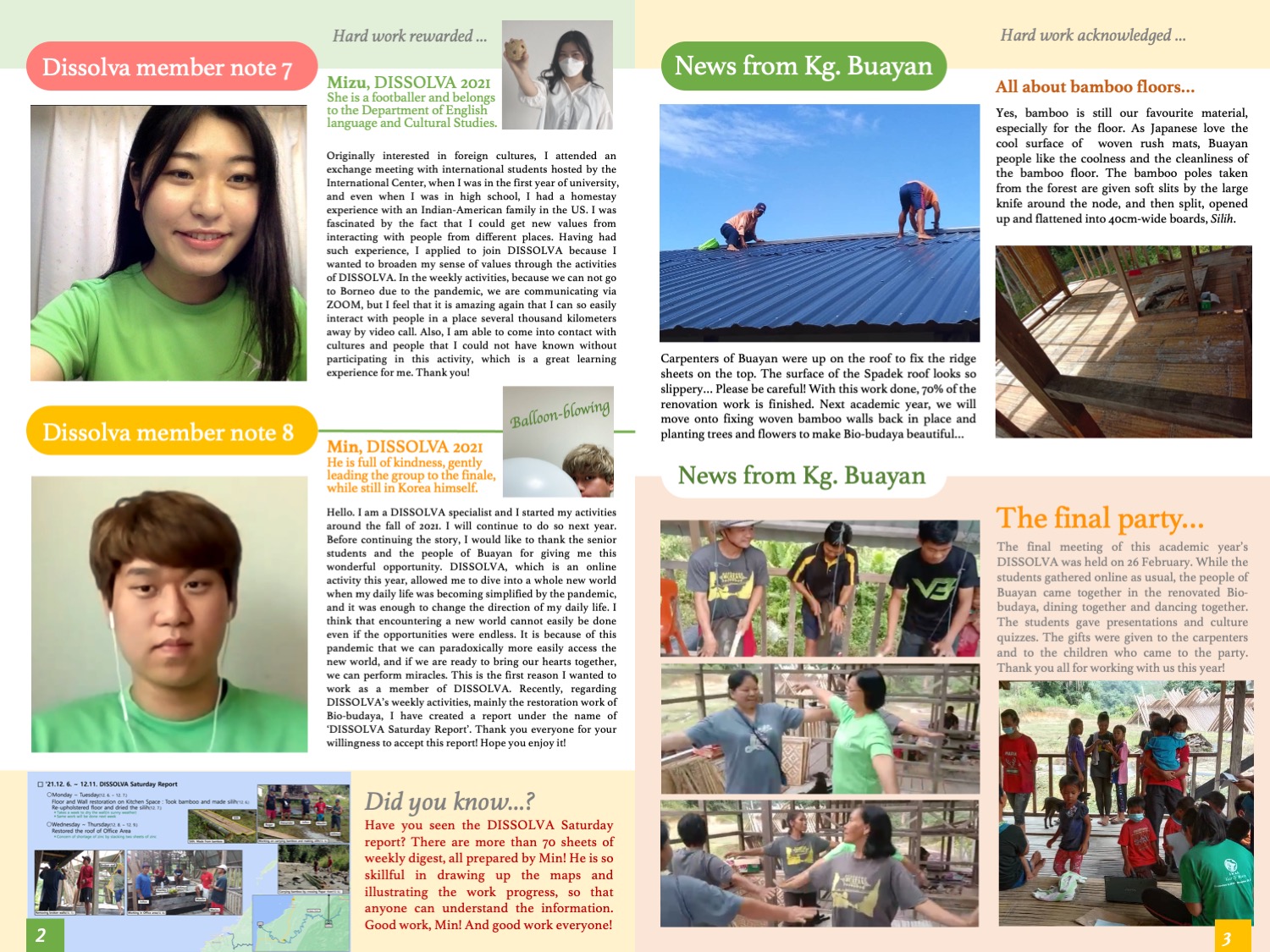
NEWSLETTER No. 8
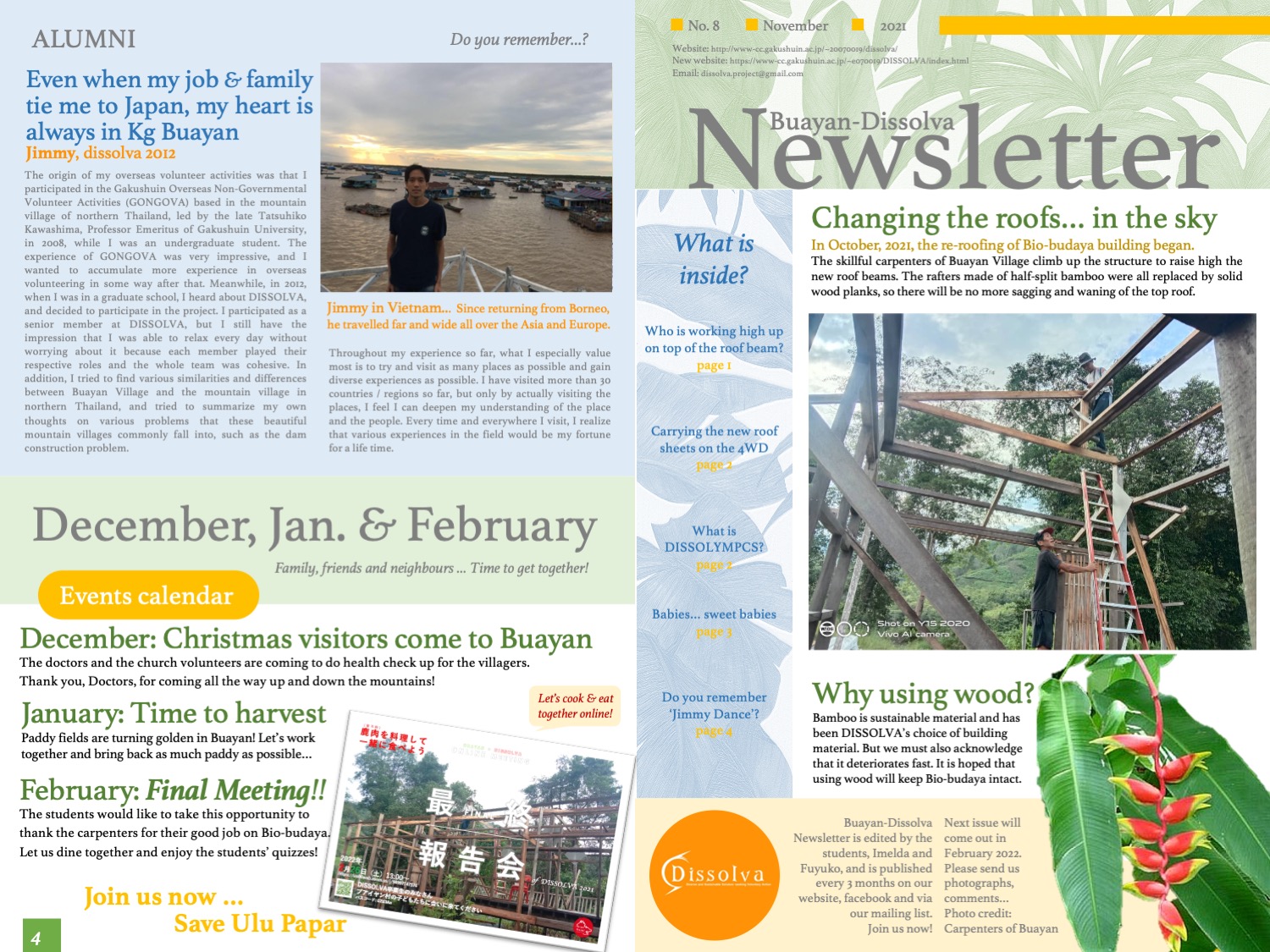
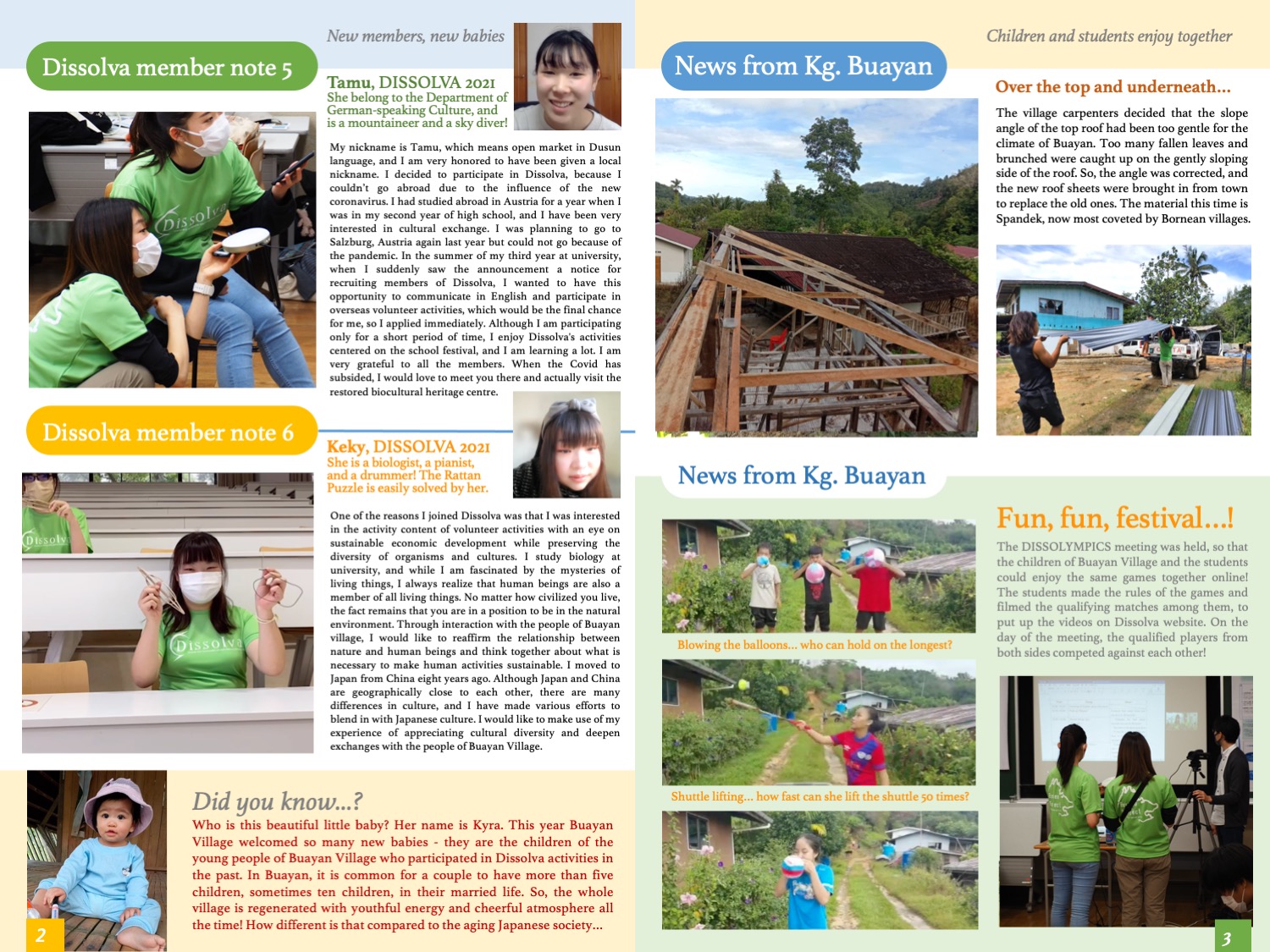
NEWSLETTER No. 7
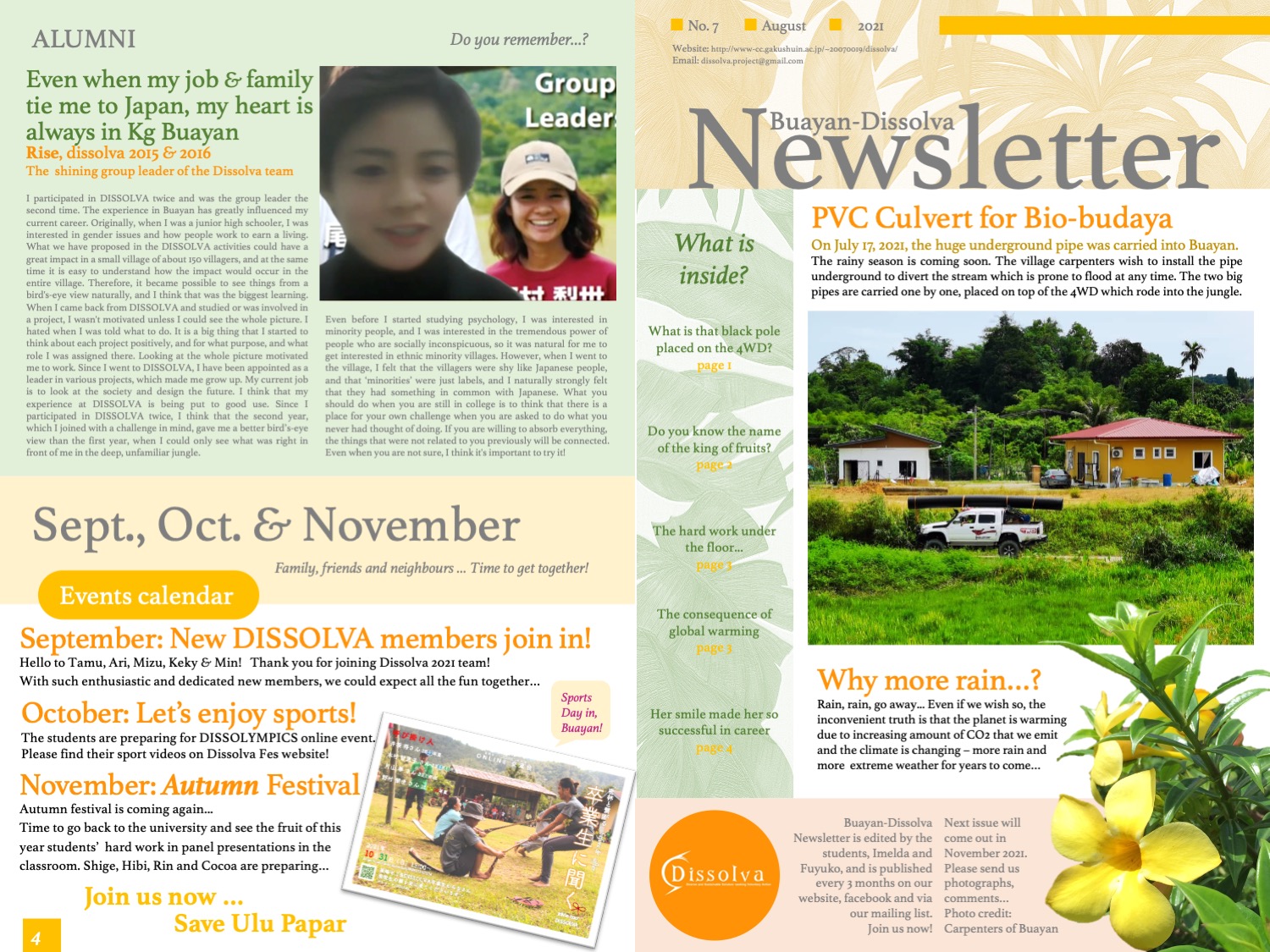
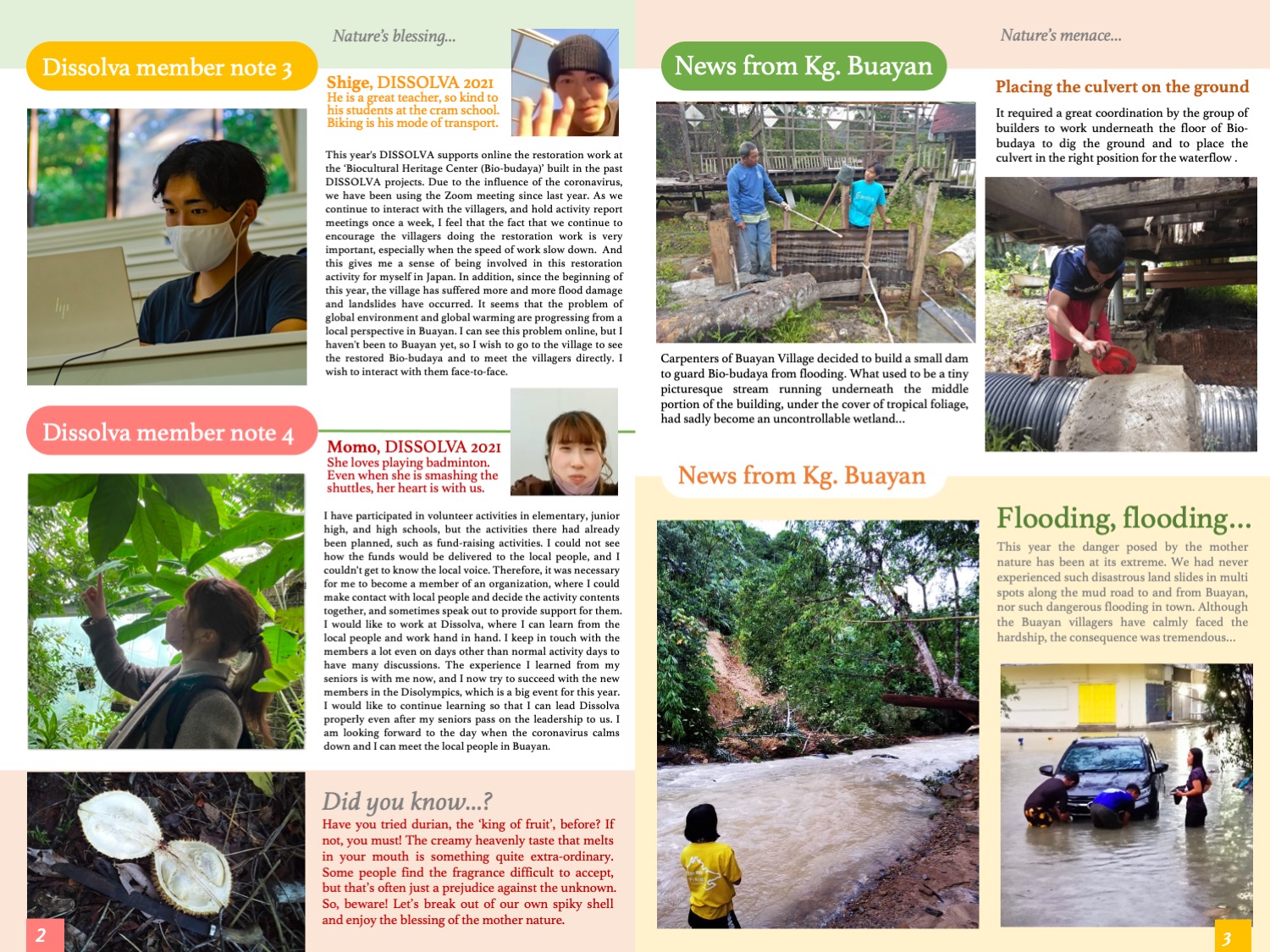
NEWSLETTER No. 6
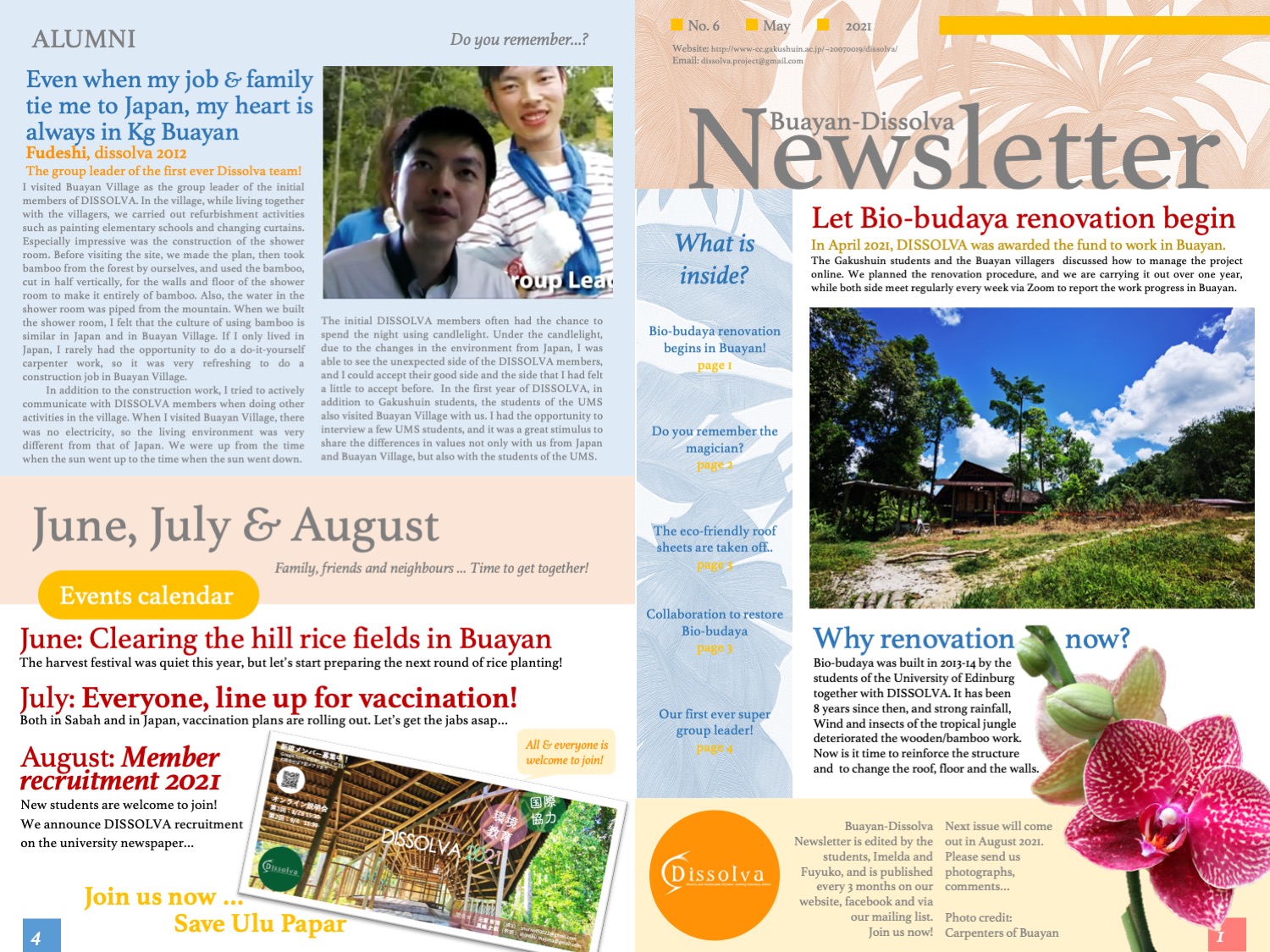
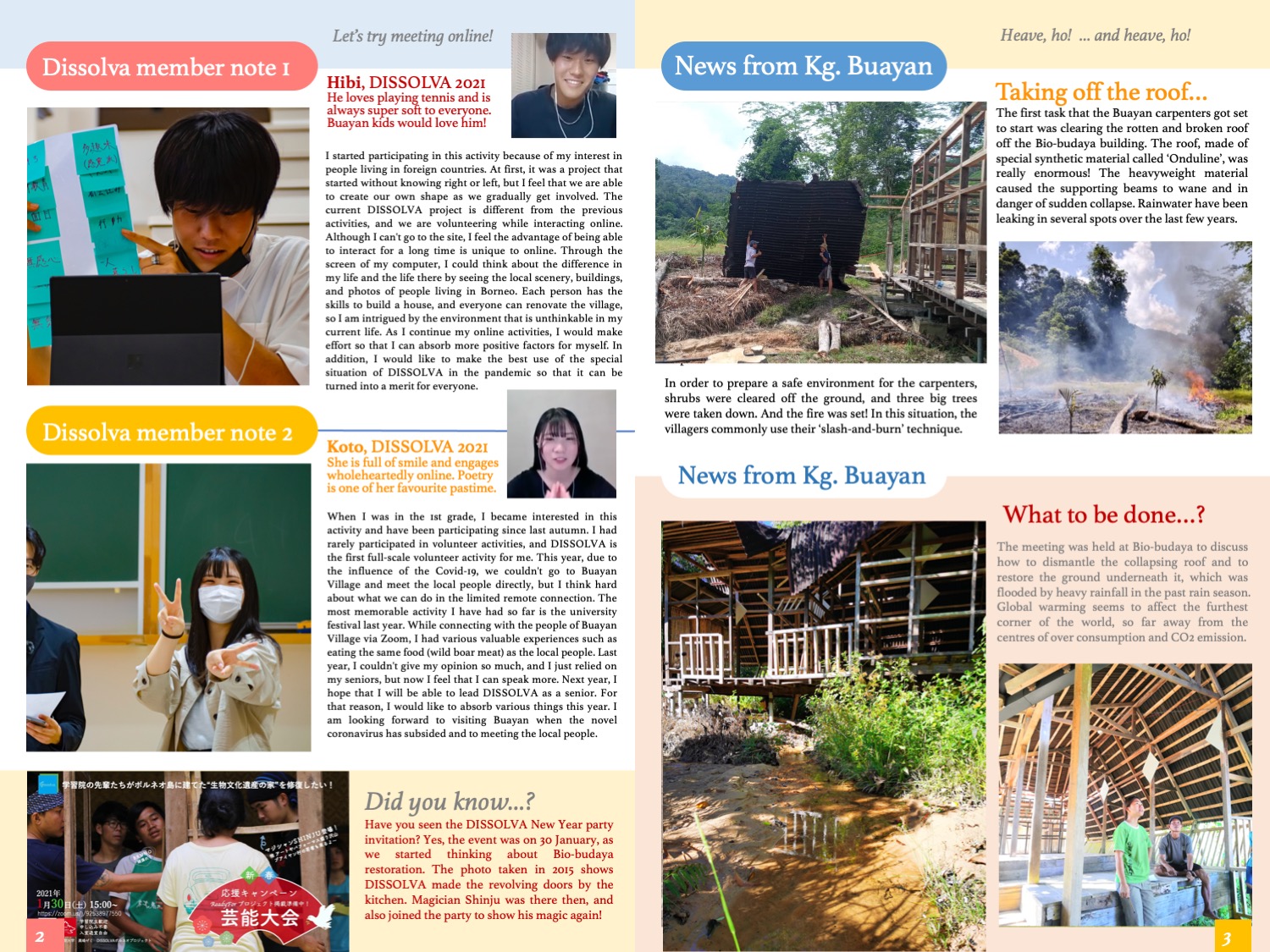
DISSOLVA 2018 Mini BORNEO PROJECT
NEWSLETTER No. 5
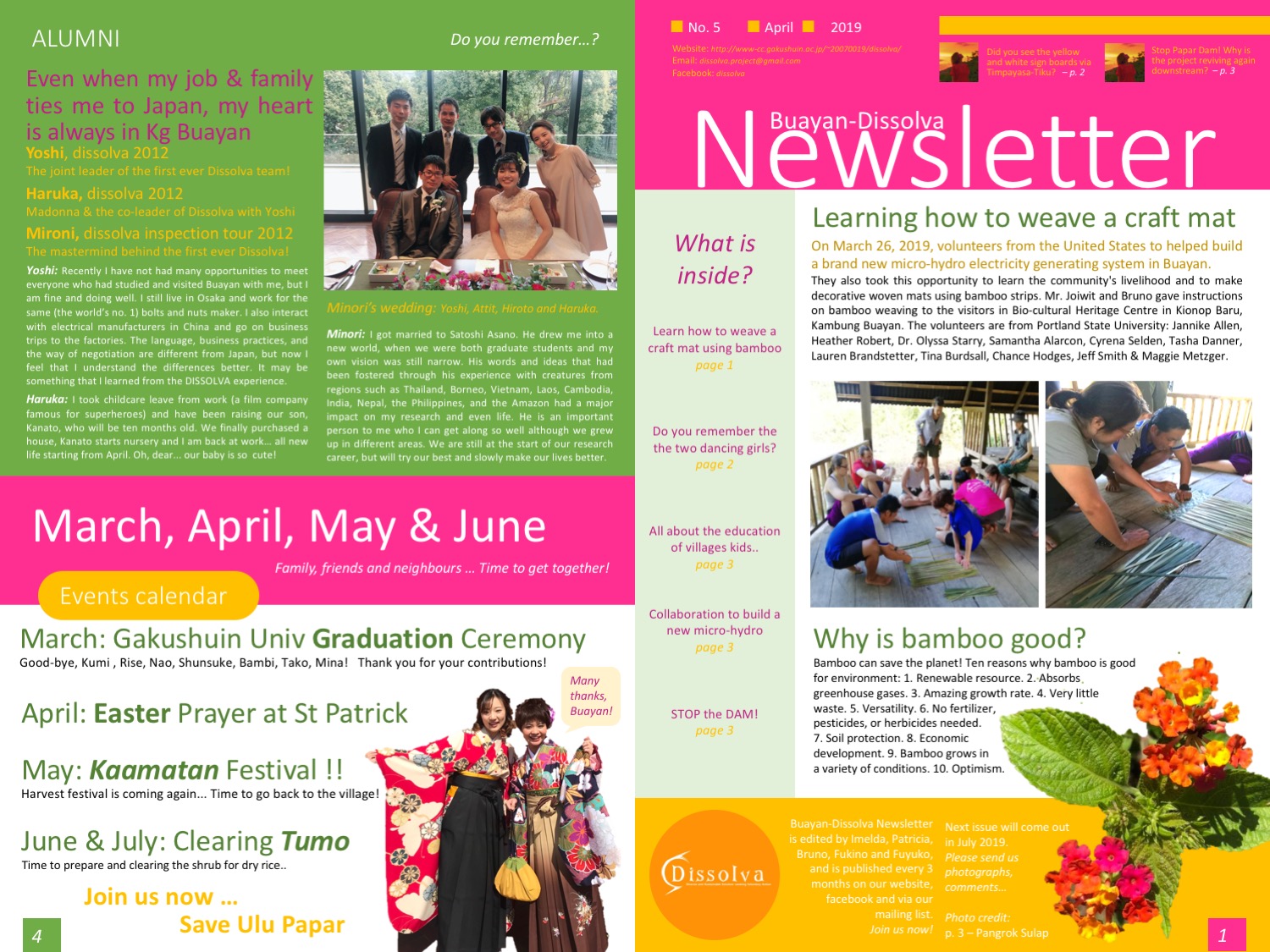
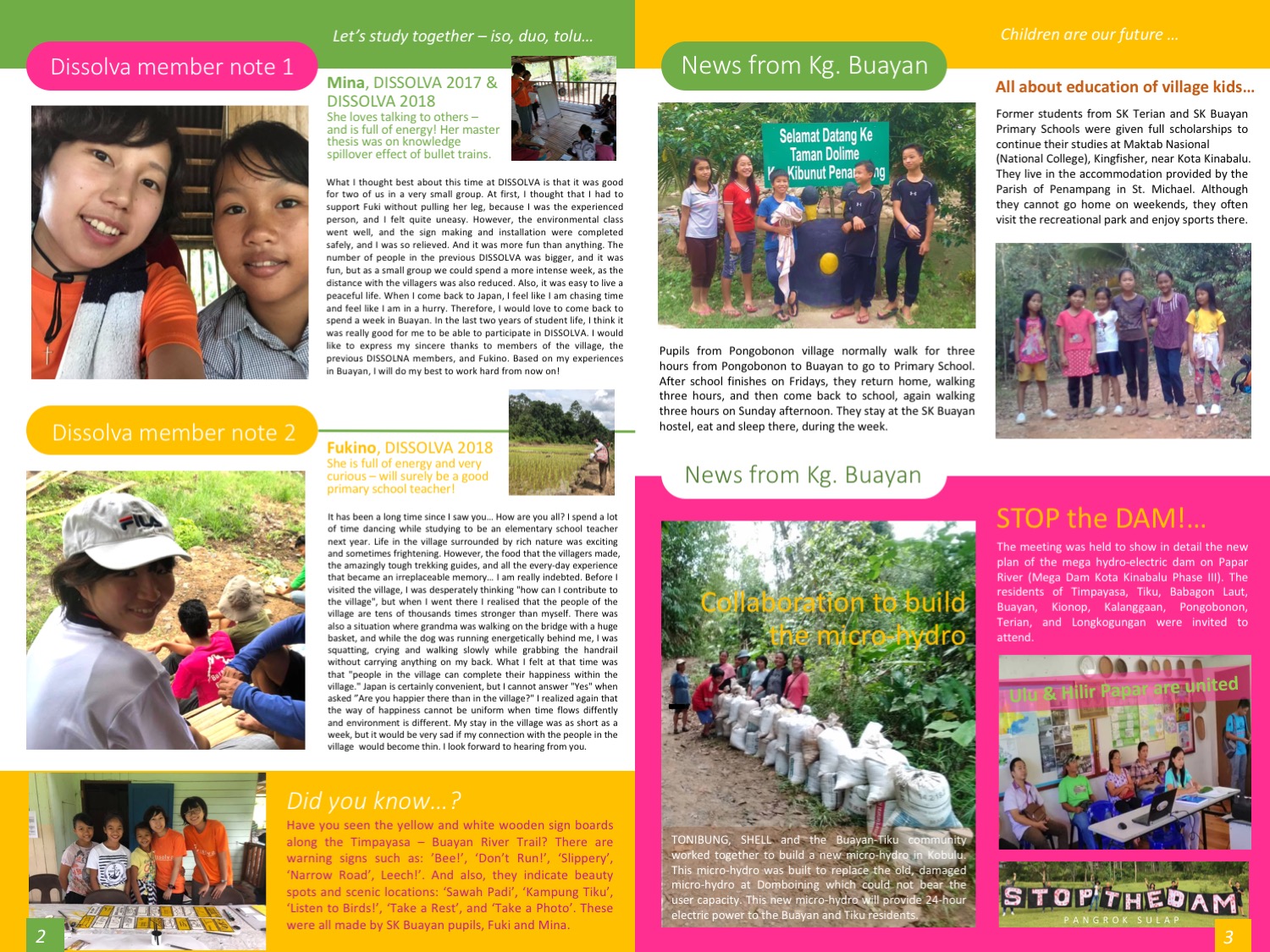
DISSOLVA 2017 Mini BORNEO PROJECT
NEWSLETTER No. 4
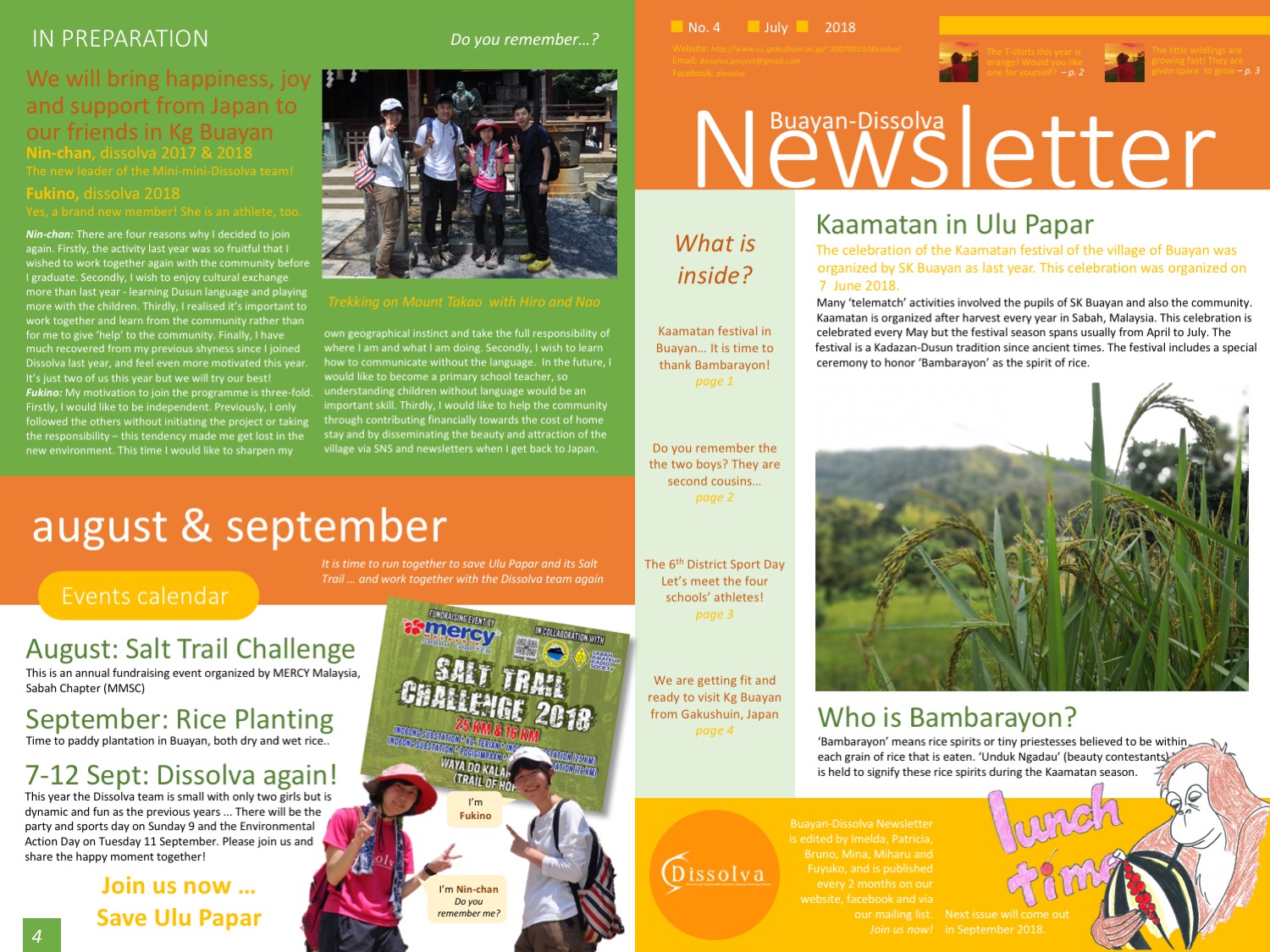
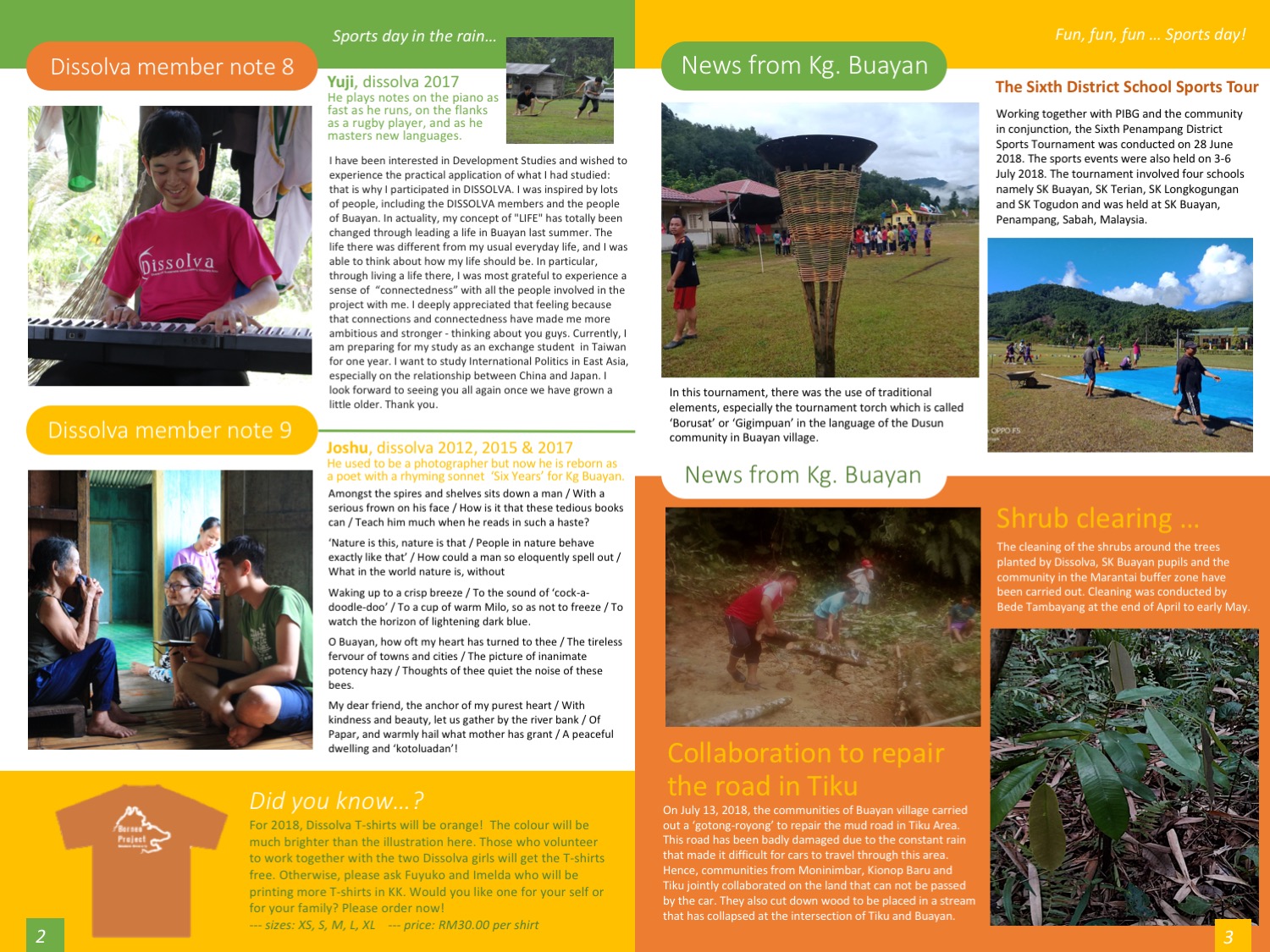
NEWSLETTER No. 3
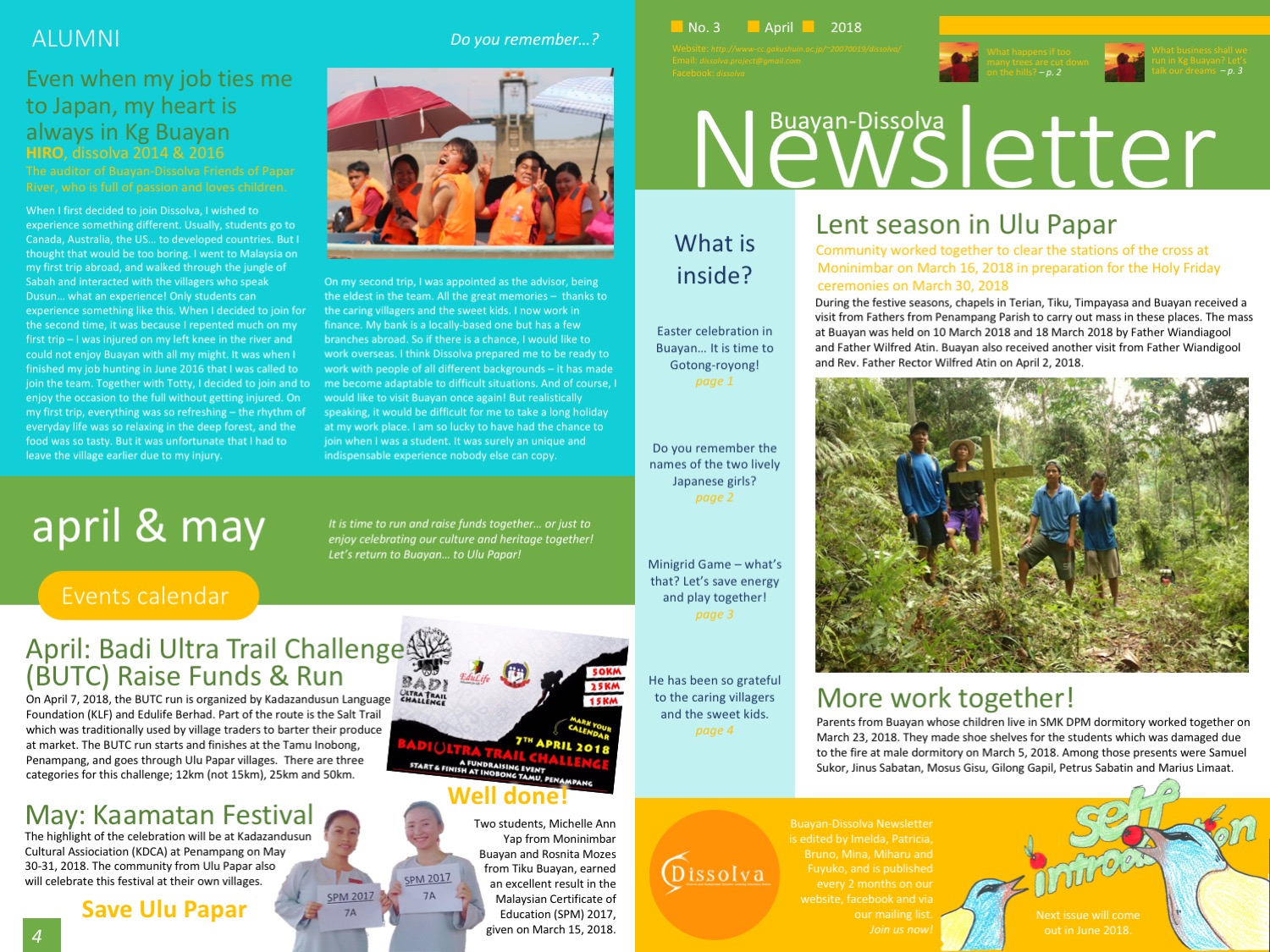
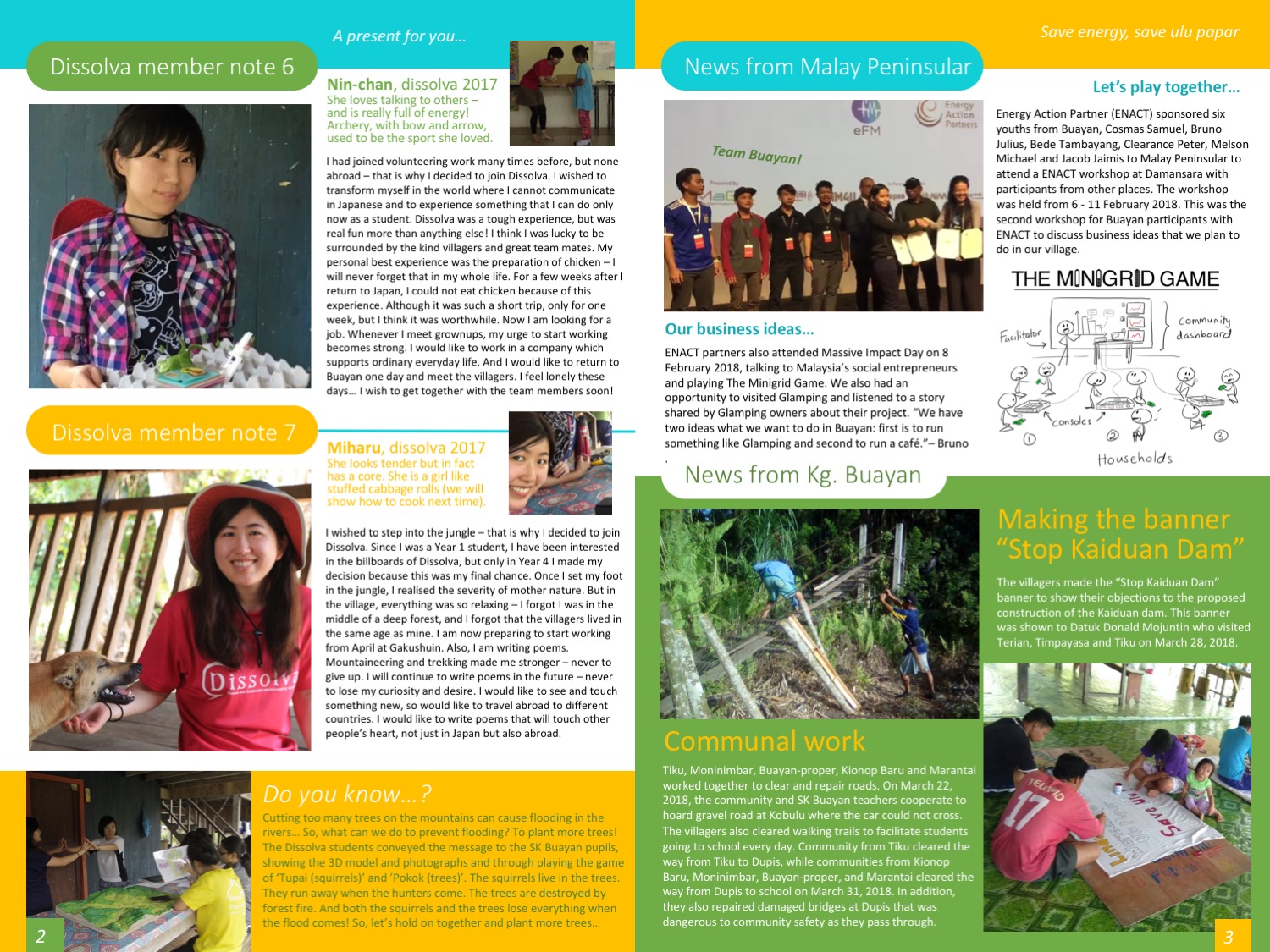
NEWSLETTER No. 2
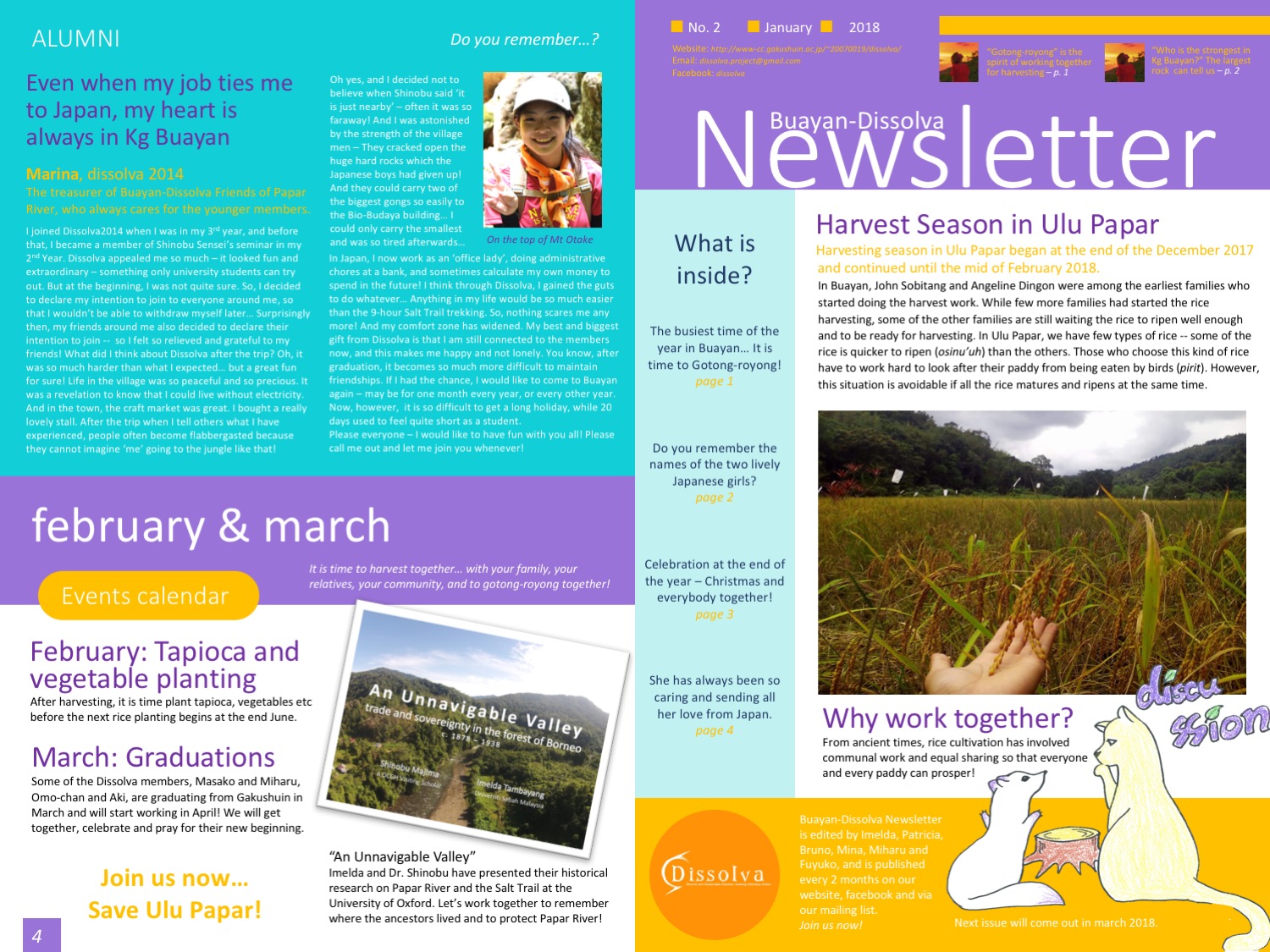
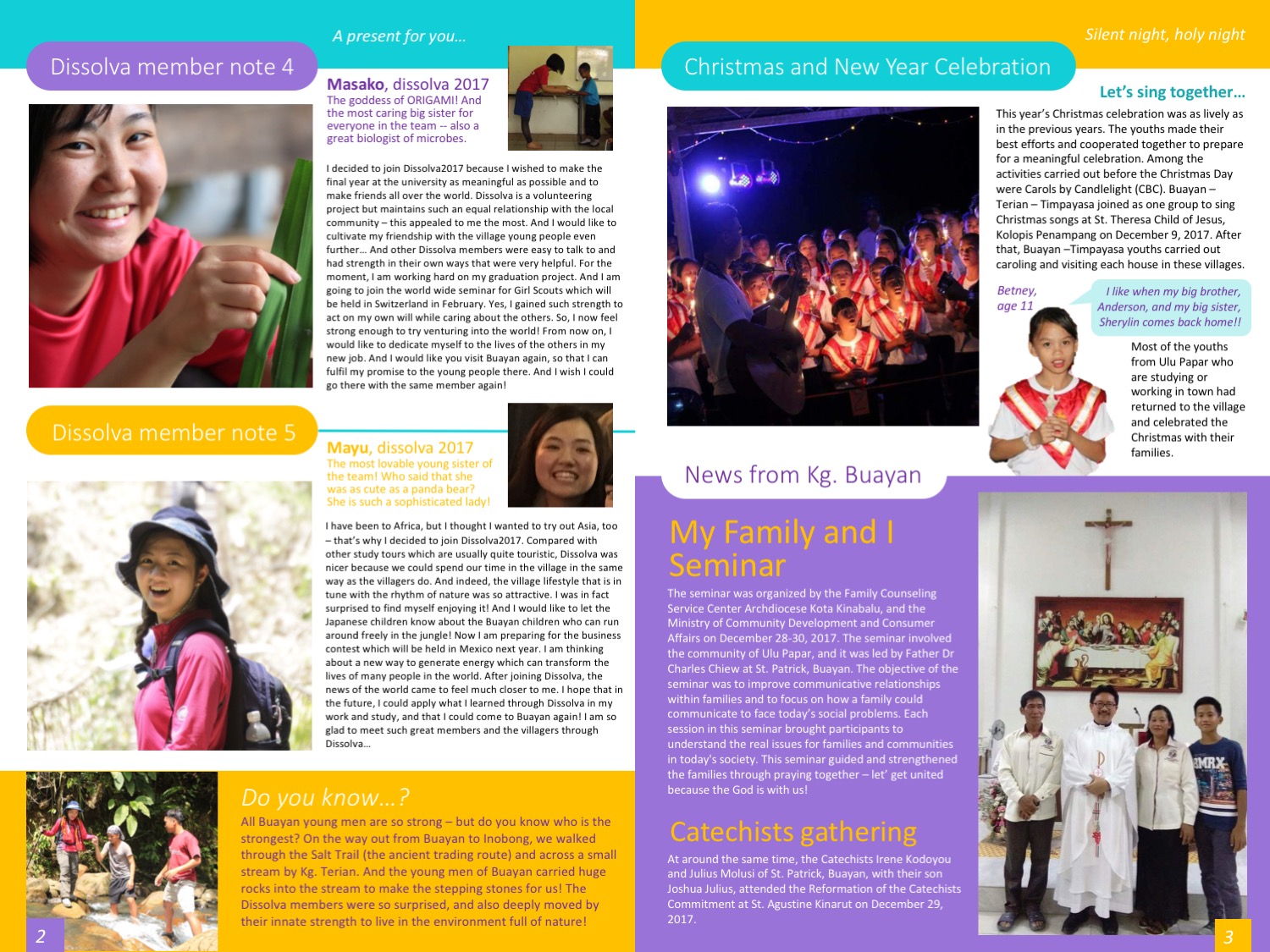
NEWSLETTER No. 1
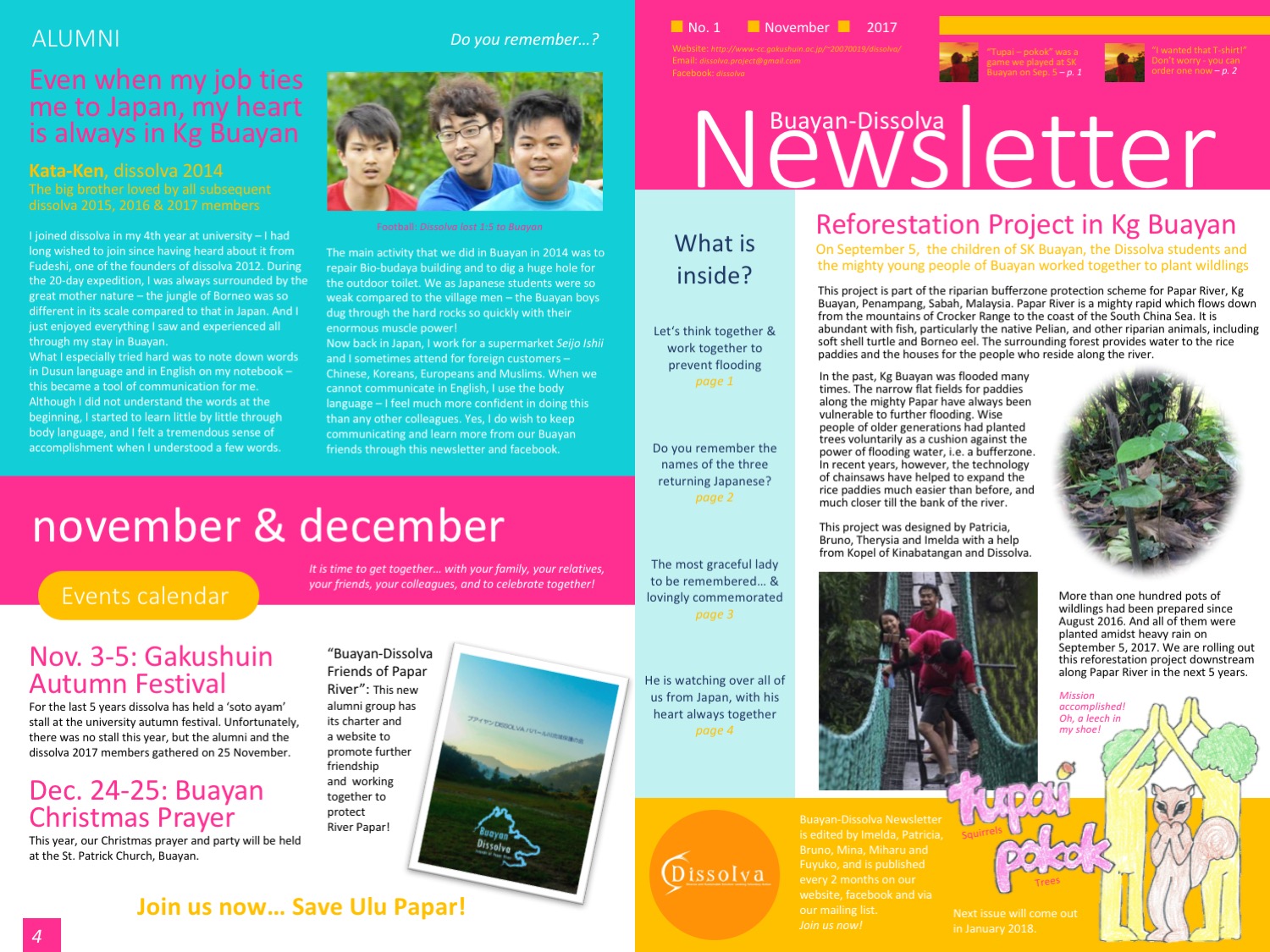
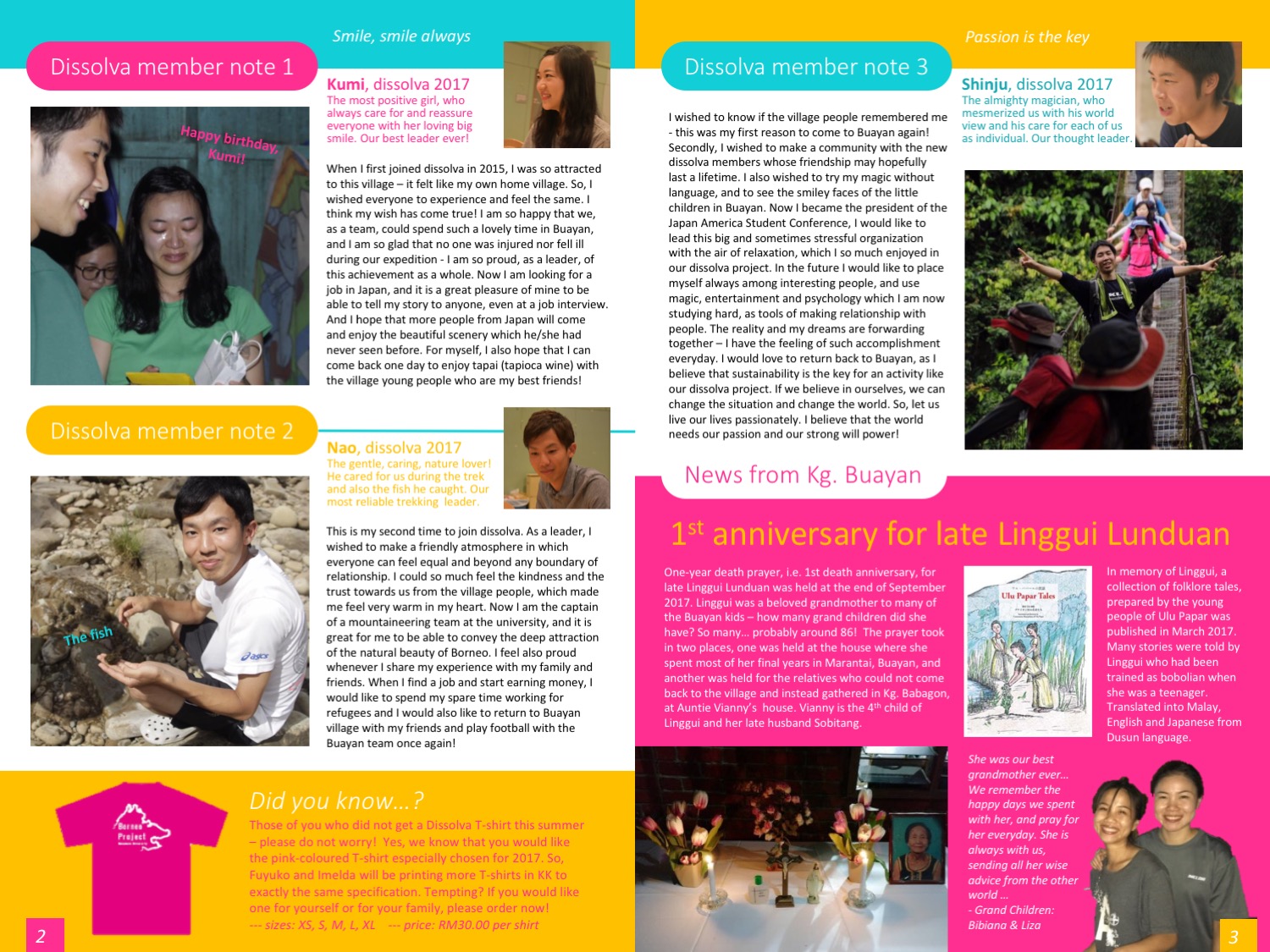
DISSOLVA 2016 BORNEO PROJECT
PROJECT 1 - 2
Project 1 Visiting Community-based Tourism in Sabah:On August 4, 2016, DISSOLVA took off from Narita to Kota Kinabalu via Kuala Lumpur. Arriving in Sabah, our first project was to visit community-based tourism sites together with the young people of Kg Buayan. Community-based tourism is a kind of tourism organised by the community, for the community, giving full respect to each individual members of the community and to the culture and natural environment around the community. DISSOLVA 2016 aimed to help the young people of Kg Buayan to start up their own community-based tourism. And in preparation for it, we went to see what others have been doing in Sabah! We visited Kg Sinisian near Mt Kinabalu and stayed in Walai Tokou Homestay. The bamboo music orchestra was terrific! At the end of our 19 day programme, we went to stay in Kg Tampasak, another vibrant village near Dongongon, Penampang. We spent a day around the lake, eating fresh fruits from the village orchard and learning how to make a hammock!
Project 2 Trekking and mapping the Salt Trail:
On August 7, our trekking expedition into the Crocker Range started from Kg Togudon, Penampang. The beautiful, cool, primary forest welcomed us! After 6 hours of serious walking through the jungle, we arrived at Kg Kalangaan. Such a tranquil place with a lovely guest house. There we enjoyed sleeping on the bamboo floor for the first time! On the nest day we walk another 5 hours to Kg Buayan along the recently constructed mud road. We could see quite a few thrash-and-burn rice field on the hill - yes, it was the rice planting season in Ulu Papar! On the way out of the Crocker Range at the end of our stay, we took the Salt Trail route from Kg Buayan to Inobong Park Substation. It took us less than 8 hours to walk through half length of the Salt Trail - what a great feeling of achievement, did we have in the end. The beautiful sunset of Inobong congratulated us. Well done DISSOLVA!
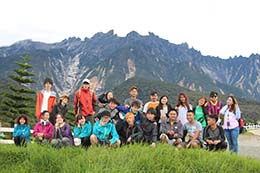
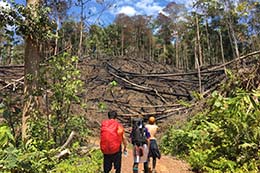
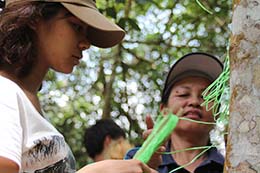
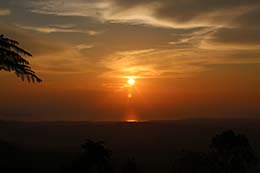
PROJECT 3 - 6
Project 3 Leachfield Waste Water Treatment System:Kg Buayan is located by the Papar River which is now targeted as the potential site for a mega multi-purpose dam. If this dam is actually constructed in the future, the people of the affected villages might be asked to move out either because their houses and properties would submerge or because their houses in the water-catchment forest by the dam lake would supposedly cause water impurification. DISSOLVA 2016 and the young people of Kg Buayan foresee such a possibility in the future, and have started experimenting with water purification systems since 2013. The leachfield waste water treatment system is one of them, which can easily be implemented by the community with a small cost. It is basically a collection of underground pipes with numerous holes and attached to a double-compartment septic tank. Waste water flushed from the toilet would slowly diffuse into the underground soil and fertilize the vegetable and/or herb garden as they are constructed on top of the waste water pipes. It took 5 days for the DISSOLVA team to install the system thanks to the instruction given by the very reliable consultant from Arkitrek.
Project 4 Bio-budaya Office Renovation:
The ecologically sustainable building of Bio-cultural Heritage Centre Kg Buayan was designed by student architects from the University of Edinburgh. DISSOLVA have helped building it since 2013. Now the office space which had been used as the storage of building materials during the construction was finally redesigned to function properly as an office cum archive of the village activities, as it was originally designed! The beautifully-framed photographs were hanged on the wall and the research materials were securely archived in the office space. They are truly the treasures of this village!
Project 5 Fishing and gathering activity:
This is a very popular activity among DISSOLVA students who come from urbanized environment of Tokyo where all food are bought from a supermarket all wrapped up in plastics and cardboards. In Kg Buayan, the river and the forest are the natural refrigerator, so to say, and provide us with abundant fish and vegetables everyday. We learned how to cook a la Kampung. And how tasty they were!!
Project 6 Ulu Papar Folklore Tale Theatre:
An amazing love story of Ulu Papar, called Bungkolong, was played out by the village young people on Sunday. It is as sad and daring as the Romeo and Juliet or the West Side Story. Also the secret of the name of 'Buayan' was revealed in the play, too! These two stories are now recorded and published as part of Ulu Papar Tales book, which is also downloadable from our website.
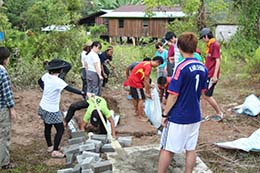
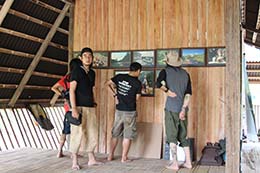
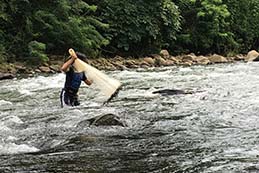
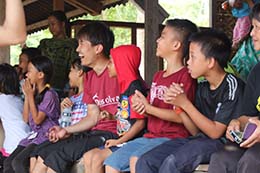
PROJECT 7 - 10
Project 7 Village food and preservation workshop:Kg Buayan is abundant with tropical fruit! They are so tasty!! We wished to bring the taste back to Japan, but we could not take home fresh fruit. So we thought we could make bottled jam using the local Sabah fruit, called Tarap. Because the jam we made was delicious, we ate most of it on site straight after the jam was cooked!
Project 8 Reforestation and plant nursery:
This is the main collaborative project to be for DISSOLVA and Kg Buayan from 2017. Why do we need reforestation in Kg Buayan? It is surrounded by such a dense forest of Crocker Range, but in the recent years deforestation is creeping up so closely to this mountain village. Palm oil plantations and rubber plantations are expanding now even over the hills so close to the Crocker Range Nature Reserve. And now that there is a mud road along the Papar River, clearing of forest near the road is slowly encroaching ever deeper into the mountains. When the mountains lose trees which act as the natural sponge to hold water, the risk of flooding increases. Just last November there was a severe flooding, which destroyed the newly built suspension bridge. And the villagers of Kg Buayan are worried about bigger flooding to happen in the future which could destroy all the rice paddies along the river. In order to prevent this catastrophe to happen, the community of Kg Buayan and DISSOLVA together drew up a plan to construct a riverside buffer zone through reforestation along the river, thanks to the advice given by the instructor invited from Kg Batu Puteh of Kinabatangan. We built together a native plant nursery, so that the reforestation project can be run continuously throughout the year and year by year.
Project 9 Wood Block Prints Workshop:
The beautiful folklore stories of Ulu Papar were not just played out in the theatre of Bio-budaya and collated into the story book, but were also made into an amazing artwork! It is the artist group Pangrok Sulap who taught us how to make this huge momentous print together. The stories of Suyan Buayan, Lotong Moninimbar and Batu Gayatas gained a new life in the gorgeous grand art work!
Project 10 Donggongon Library Exhibition:
Finally, finally after two weeks in Kg Buayan, we all trekked out together with the young people of Buayan through the Sal Trail, and brought such good memories of this beautiful village with us out into town. We wished to share the feeling of fulfilment with those who have never been to Kg Buayan before - we hoped that we could inspire other people to travel to this beautiful village - and promote an original community-based eco tourism in Ulu Papar! So, we held an exhibition to celebrate the community-based eco tourism in Sabah at the Donggongon public library for three weeks at the end of August 2016. We heard that after we left for Tokyo, there were so many visitors who came to look at the posters! Hope in the future, there will be more people visiting Buayan and more people concerned about the beautiful environment of this area!
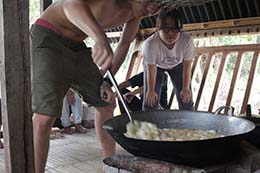
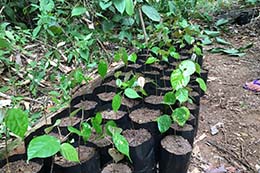
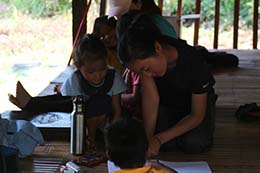
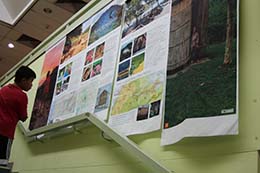
DISSOLVA 2015 BORNEO PROJECT
DAY 1 - 6
On August 13, 2015, DISSOLVA took off from Narita to Kota Kinabalu with fresh new members. All of them were first timers - five Year 1 students and four Year 3 students. Arriving in Sabah, we first visited Mahua Water Fall, which is a beautiful sight-seeing spot, just a few minutes walk from the car park. We then camped at the Salt Trail starting point at Tikolod for the night. There we learnt how to make Sompoton and Bunkau, the traditional musical instuments for Dusun people. On August 15, the Salt Trail trekking expedition to Kg. Buayan began. On the way, DISSOLVA stayed at an old church in Kg. Kionop.
In Kionop, we made the sign for Kionop Church so that trekkers will know where they are staying. We also donated a bunch of paper crane, made by more than two hundred students at Gakushuin University, in order to commemorate the end of the WWII seventy years ago. We also enjoyed the experience of a petit expedition near Kampung Kionop: particularly drinking water from the cutting of a tree branch was something which we cannot experience in Japan.
After a 4 days stay in Kg. Kionop, DISSOLVA started trekking again. It took us two and a half hours to get to Kg. Buayan - an easy and enjoyable trekking route along the Kionop River.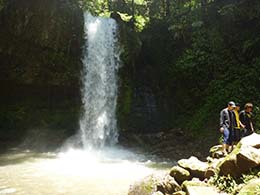
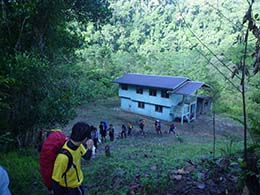
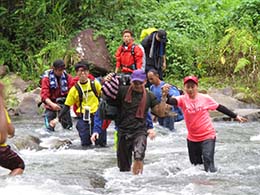
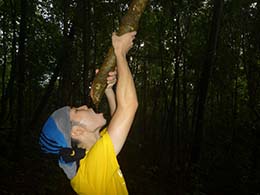
LEARNING THE CULTURE OF ULU PAPAR
For 12 days, DISSOLVA stayed in Kampung Buayan and learnt its culture. Firstly, we learnt how to play and make traditional musical instruments from Sabah. They are mainly made of bamboo. For example, Bunkao, Sompoton and Tongkugon. Bamboo musical instruments make good sounds when they are completely dry. They make quite loud, high-pitched sound.
We first learnt how to use the sharp knives of different sizes to cut bamboo, and then how to make the perfect pitch for each key when tuning the sounds of instruments. There is another traditional musical culture, the gong. Our friends of Kg. Buayan love to play the gong when they dance Sumazao.
Secondly, we made bead bracelets using the local plant seeds. We first plucked up the bushy plant of Job's tears by the stream. Next, we took out the seeds from the plant, which look shinny and perfect for beadwork.
Third, we made a hole in the center of the seed for threading a string. Finally, we threaded the beads.
Beads bracelets which we made and brought back home to Japan remind us of good memory of Kg. Buayan.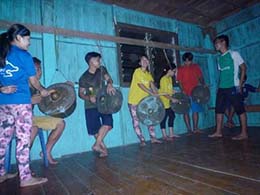
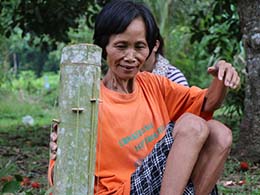
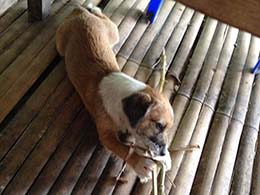
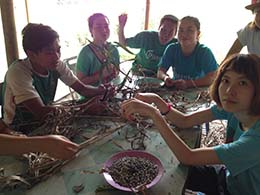
AT THE BIO-CULTURAL HERITAGE CENTRE
DISSOLVA while in Kampung Buayan and worked on the Bio-cultural Heritage Centre (Pusat Bio-budaya), which we started building in 2013 with the Arkitrekkers.
This building was designed by those Arkitrekkers from Edinburgh in order to showcase the culture of Ulu Papar based on its blessings of surrounding nature. We plastered the walls with the sand from the river, and and used bamboo strips to make screenings in a decorative manner, including the art work of the name of Buayan to symbolize this building.
When we came to Kg. Buayan, the first plant that came into our eyes were the bamboo. So the word art using bamboo symbolize this village.
We painted the bamboo words in green because green shows the color of nature.
In the final few days at Pusat Bio-budaya, we also made more art with Panglok Sulap, a famous artist group in Sabah that makes wood block prints.
We did this activity to express our feelings towards nature by carving it in the wood blocks. 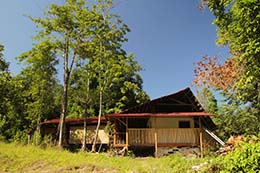
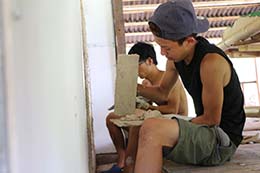
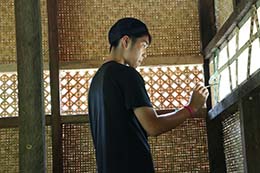
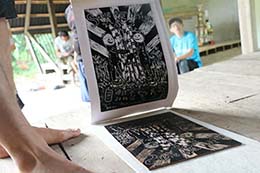
DAY 17 - 19
At the end of the stay, DISSOLVA trekked out from Kampung Buayan, walking the other half of the Salt Trail to Kg. Inobong in one day, nine hours.
So all in all, we walked 34km in total through the Salt Trail starting from the substation in Tikolod.
The Salt Trail was an exciting experience, different from any mountain trail in Japan. We found that it was challenging to follow the trail in the rainforest since there are many rivers that we had to cross and many steep ridges to climb.
We also found interesting animals and plants, including a beautiful snake and a colorful cicada in the jungle.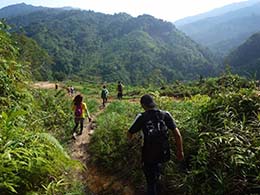

DISSOLVA 2014 BORNEO PROJECT
DAY 1 - 6
On August 07, 2014, DISSOLVA took off from Narita to Kota Kinabalu with new members. In Sabah, we first visited Kinabalu Park with rich and beautiful foliage, and Kundasang War Memorial which reminded us of the World War II. On August 09, the trekking expedition to Kg. Buayan began. On the way, DISSOLVA stayed in Kg. Kalangaan and learned its culture and lifestyle. The villagers took us to the scene of wild boar hunting. DISSOLVA harvested tapioca, and fished in the River Papar. Fishing, hervesting and hunting are all done under the rule of 'TAGAL'. It was very exciting to have been able to experience the real life of the village, and to learn about the local strategy of forest resource management.
There is a huge sword-shaped monument, 4 hours away from the village on foot, called Gayatta Stone. Not only this legendary monument, but also there are a lot of such historic remains in Ulu Papar. After a 4 days stay in Kg. Kalangaan, DISSOLVA started trekking again. Fortunately, it did not rain, and we enjoyed a pleasant walk along the River Papar to Kg. Buayan.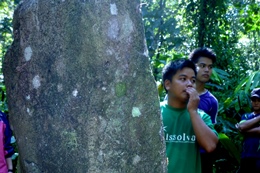
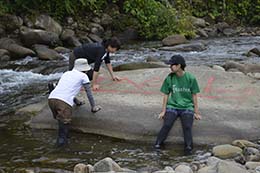
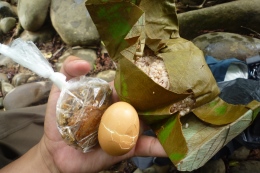
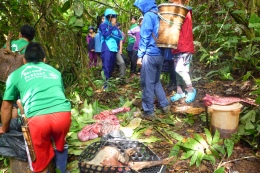
DAY 7 - 11
DISSOLVA stayed in Kg. Buayan for 12 days. This year, the young people of the village initiated the 'hunter-gather activity' to which two of DISSOLVA members joined in rotation everyday, collecting vegetables and fruits and fishing in the river etc. Through this daily activity, we could enjoy more of the real life of the village and make even closer friendship with our village friends. DISSOLVA also continued to work on the Bio-cultural Heritage Community Centre, adding a toilet shed and a septic tank to the building, and plastering the wall with cement made of river sand and pebbles.
To mark the 70% completion of the building, we invited all the villagers and held a Sunday party at the Bio-cultural Heritage Centre on August 17. We ate the Sunday dinner together and danced sumazau together. Further more, the winners of the earlier-held sporting events, i.e. tarik tali, tarik tagu and football, were awarded with lots of tasty gifts, and then everyone of the village watched a pantomime on the theme of 'balik kampung' played out by the young people of the village and DISSOLVA members. We all had a great big laugh!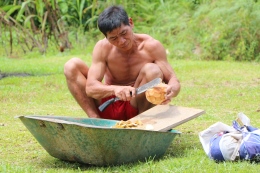
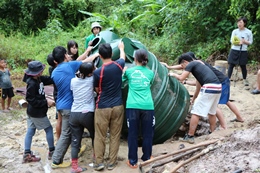
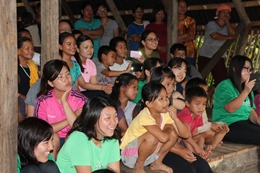
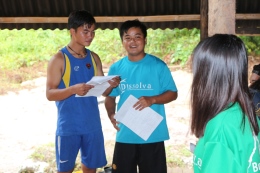
DAY 12 - 16
After the big party day, our architectural supervisors from ARKITREK held the 'bamboo workshop', starting from bamboo hunting in the jungle, transporting them on the river, then splitting them into long thin sticks, and weaving them into beautifully patterned panels of a traditional design. DISSOLVA also used the traditional technique of splitting bamboo into wide open boards, which were then used to cover the walls of the toilet shed.
This year, DISSOLVA had been entrusted with gifts of sporting goods and musical instruments from the children of a primary school in Japan, so we brought them all to the primary school of Kg. Buayan and played sports and music together with all the school children. We also enjoyed yet another party with the villagers and their guests from town, singing and dancing sumazau together and drinking our hand-made tompung. We also showed our traditional 'hanagasa dance' and sang Anak Kampung in Japanese! 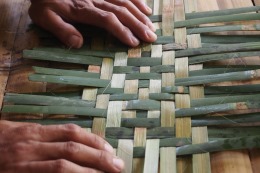
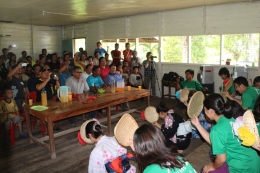
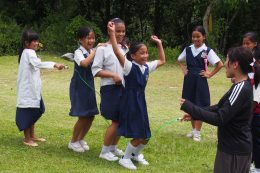
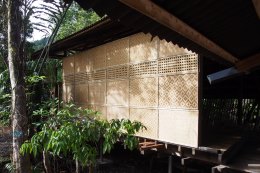
DAY 17 - 19
At the end of the stay, DISSOLVA walked the most lengthy trail from Kg. Buayan to Kg. Inobong in one day, nine hours. We left before dawn, saying good bye to our village friends, and arrived just in time for the most spectacular sunset on the sea. We can never forget the beautiful red sky. After leaving Inobong Salt Trail substation on the next day, we visited Sabah State Museum and had lunch on the sandy beach of Tanjung Aru. The vibrant city life of Kota Kinabalu was felt as a bit of surprise to us, after having lived a quiet soulful life in the village. The whole 19 days went very quickly - we flew back to Japan, hoping that we come back once again next year or in the near future.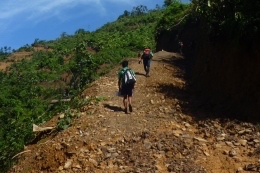

DISSOLVA 2013 BORNEO PROJECT
DAY 1 - 4
In August 2013, DISSOLVA carried out an expediton further into the Papar Valley, trekking in the virgin rain forest for eight hours in the rain. The village of Kalanggaan where we stayed for two nights is a most idillic place, solitary standing in the untouched natural environment. The sunset viewed from the guesthouse was most spectacular. Having learnt and experienced traditional bamboo basket making, fishing in the river, collecting rattan and tranditional gong music and dance, DISSOLVA set off to trek another eight hours down stream to the Village of Buayan, crossing the winding River Papar several times. (Photos by Raymond Sipanis)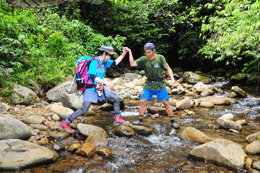
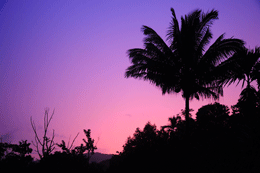
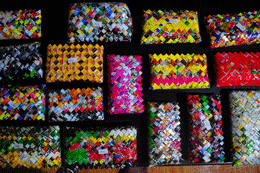
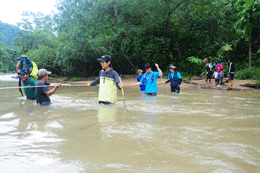
DAY 5 - 16
DISSOLVA stayed in the Village of Buayan for 11 days. This year, the main activity revolved around the construction of the Bio-cultural Heritage Community Centre, which was designed by the Arkitrek team of students and graduates from the University of Edinburgh. DISSOLVA did lots of digging and making sadbags. Other activities invloved lots of hammering the nails to construct a bamboo shower booth, as well as rice planting in the paddy. 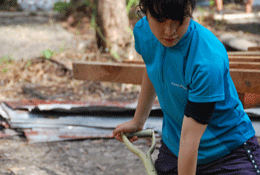
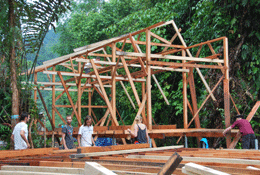
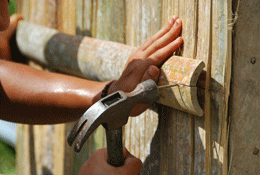
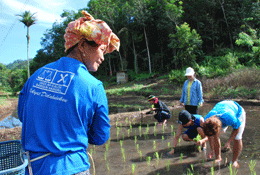
DAY 17 - 18
At the end of the whole tour, DISSOLVA visited the Island of Gaya, just off the coastline of Kota Kinabalu for some relaxation. Had fun on the speed boats and learned more about the wildlife through rambling in the forest. (Photos by Raymond Sipanis)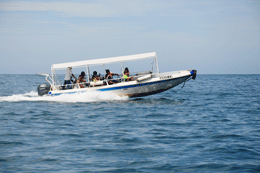
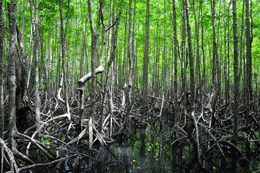
DISSOLVA 2012 BORNEO PROJECT
DAY 1 - 4
In August 2012, DISSOLVA spent the first few days in Sabah, East Malaysia (Borneo), visiting the northern tip of the Island and learning the culture and livelihood of Rungus communities in Kudat in northern Sabah. Travelling along the vast fields of oil palm trees, DISSOLVA visited those communities which specialise in honey bee farming, gong making, and crafting beads accessories. Stayed overnight in the traditional Rungus longhouse, enjoying the traditional music, dance and cuisine, stretching ourselves on the most relaxing bamboo floor in the longhouse. On the way back to Kota Kinabalu, DISSOLVA visited a palm oil factory and its estate and studied the modern commercial agriculture. Also visited the butterfly and orchid conservation park in Penampang to learn about the endangered species and bio-diversity in the Bornean rain forest.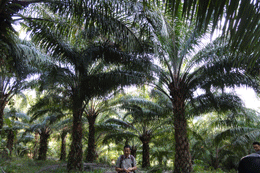
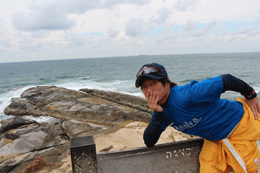
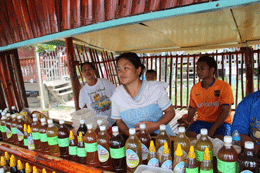
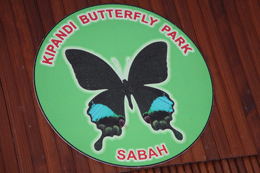
DAY 5 - 15
Collaborating together with the students of the University Malaysia Sabah, DISSOLVA carried out educational and community work activities in the Village of Buayan, in Penampang District, Sabah. Buayan is located on the margin of the Crocker Range natural reserve, about 30km away from Kota Kinabalu. Buayan is an indigenous Dusun community, and their main religion is Christianity. As there was no dart track connecting to the Village of Buayan, DISSOLVA trekked for 3 hours along the River Papar, absorbing all the goodness of mother nature in the rain forest. In Buayan, DISSOLVA built a shower booth, using the locally sourced material - the thick bamboo of 20 cm in diameter. Bamboo is the versatile plants, that grow all along the river and can be used in thousands of different ways in the village. DISSOLVA especially learnt for the first time how to split the stems without breaking them into pieces to make bamboo walls.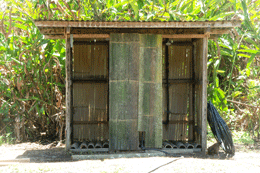
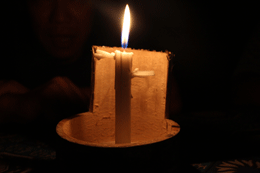
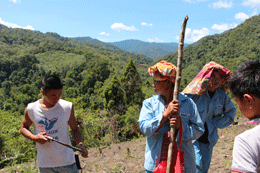
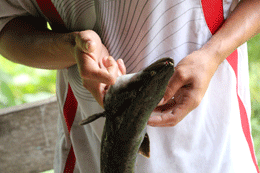
DAY 16 - 17
As a roundup of the tour, DISSOLVA visited the water village near Kota Kinabalu, and the campus of the University Malaysia Sabah, which is astonishingly huge and beautiful. Gave presentations to share the experience with staff and students of the University.